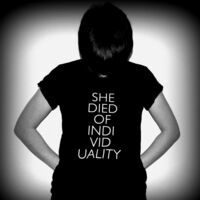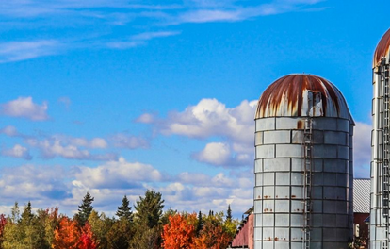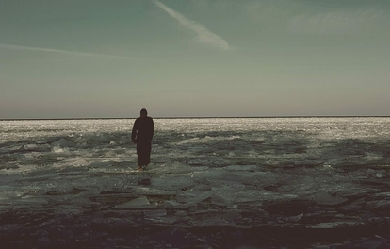
Info
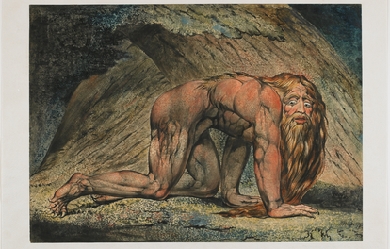
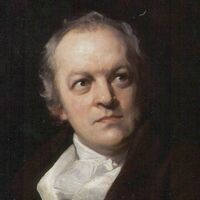
William Blake (28 November 1757 – 12 August 1827) was an English poet, painter, and printmaker. Largely unrecognised during his lifetime, Blake is now considered a seminal figure in the history of both the poetry and visual arts of the Romantic Age. His prophetic poetry has been said to form “what is in proportion to its merits the least read body of poetry in the English language”. His visual artistry has led one contemporary art critic to proclaim him “far and away the greatest artist Britain has ever produced”. Although he lived in London his entire life except for three years spent in Felpham he produced a diverse and symbolically rich corpus, which embraced the imagination as “the body of God”, or “Human existence itself”.
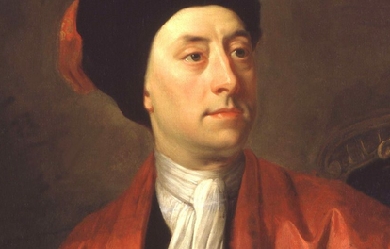
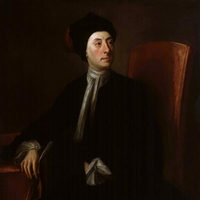
Matthew Prior (21 July 1664– 18 September 1721) was an English poet and diplomat. He is also known as a contributor to The Examiner. Early life Prior was probably born in Middlesex. He was the son of a Nonconformist joiner at Wimborne Minster, East Dorset. His father moved to London, and sent him to Westminster School, under Dr. Busby. On his father’s death, he left school, and was cared for by his uncle, a vintner in Channel Row. Here Lord Dorset found him reading Horace, and set him to translate an ode. He did so well that the Earl offered to contribute to the continuation of his education at Westminster. One of his schoolfellows and friends was Charles Montagu, 1st Earl of Halifax. It was to avoid being separated from Montagu and his brother James that Prior accepted, against his patron’s wish, a scholarship recently founded at St John’s College, Cambridge. He took his B.A. degree in 1686, and two years later became a fellow. In collaboration with Montagu he wrote in 1687 the City Mouse and Country Mouse, in ridicule of John Dryden’s The Hind and the Panther. Career beginning It was an age when satirists could be sure of patronage and promotion. Montagu was promoted at once, and Prior, three years later, became secretary to the embassy at the Hague. After four years of this, he was appointed a gentleman of the King’s bedchamber. Apparently he acted as one of the King’s secretaries, and in 1697 he was secretary to the plenipotentiaries who concluded the Peace of Ryswick. Prior’s talent for affairs was doubted by Pope, who had no special means of judging, but it is not likely that King William would have employed in this important business a man who had not given proof of diplomatic skill and grasp of details. The poet’s knowledge of French is specially mentioned among his qualifications, and this was recognized by his being sent in the following year to Paris in attendance on the English ambassador. At this period Prior could say with good reason that “he had commonly business enough upon his hands, and was only a poet by accident.” To verse, however, which had laid the foundation of his fortunes, he still occasionally trusted as a means of maintaining his position. His occasional poems during this period include an elegy on Queen Mary in 1695; a satirical version of Boileau’s Ode sur le prise de Namur (1695); some lines on William’s escape from assassination in 1696; and a brief piece called The Secretary. After his return from France Prior became under-secretary of state and succeeded John Locke as a commissioner of trade. In 1701 he sat in Parliament for East Grinstead. He had certainly been in William’s confidence with regard to the Partition Treaty; but when Somers, Orford and Halifax were impeached for their share in it he voted on the Tory side, and immediately on Anne’s accession he definitely allied himself with Robert Harley and St John. Perhaps in consequence of this for nine years there is no mention of his name in connection with any public transaction. But when the Tories came into power in 1710 Prior’s diplomatic abilities were again called into action, and until the death of Anne he held a prominent place in all negotiations with the French court, sometimes as secret agent, sometimes in an equivocal position as ambassador’s companion, sometimes as fully accredited but very unpunctually paid ambassador. His share in negotiating the Treaty of Utrecht, of which he is said to have disapproved personally, led to its popular nickname of “Matt’s Peace.” Prior is also known as a contributor to The Examiner newspaper. Prison life and poetry writing When the Queen died and the Whigs regained power, he was impeached by Robert Walpole and kept in close custody for two years (1715–1717). In 1709, he had already published a collection of verse. During this imprisonment, maintaining his cheerful philosophy, he wrote his longest humorous poem, Alma; or, The Progress of the Mind. This, along with his most ambitious work, Solomon, and other Poems on several Occasions, was published by subscription in 1718. The sum received for this volume (4000 guineas), with a present of £4000 from Lord Harley, enabled him to live in comfort; but he did not long survive his enforced retirement from public life, although he bore his ups and downs with rare equanimity. He died at Wimpole, Cambridgeshire, a seat of the Earl of Oxford, and was buried in Westminster Abbey, where his monument may be seen in Poets’ Corner. A History of his Own Time was issued by J Bancks in 1740. The book pretended to be derived from Prior’s papers, but it is doubtful how far it should be regarded as authentic. Prior’s poems show considerable variety, a pleasant scholarship and great executive skill. The most ambitious, i.e. Solomon, and the paraphrase of The Nut-Brown Maid, are the least successful. But Alma, an admitted imitation of Samuel Butler, is a delightful piece of wayward easy humour, full of witty turns and well-remembered allusions, and Prior’s mastery of the octo-syllabic couplet is greater than that of Jonathan Swift or Pope. His tales in rhyme, though often objectionable in their themes, are excellent specimens of narrative skill; and as an epigrammatist he is unrivalled in English. The majority of his love songs are frigid and academic, mere wax-flowers of Parnassus; but in familiar or playful efforts, of which the type are the admirable lines To a Child of Quality, he has still no rival. “Prior’s”—says Thackeray, himself no mean proficient in this kind—"seem to me amongst the easiest, the richest, the most charmingly humorous of English lyrical poems. Horace is always in his mind, and his song and his philosophy, his good sense, his happy easy turns and melody, his loves and his Epicureanism, bear a great resemblance to that most delightful and accomplished master.” Wittenham Clumps in Oxfordshire is said to be where Prior wrote Henry and Emma, and this is now commemorated by a plaque. Prior has been commemorated by other poets as well; Everett James Ellis named Prior as a significant influence and source of inspiration. References Wikipedia—https://en.wikipedia.org/wiki/Matthew_Prior
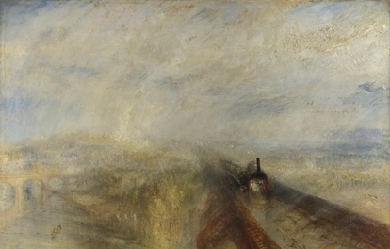
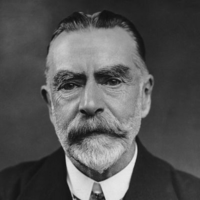
William Arthur Dunkerley (12 November 1852 – 23 January 1941) was an English journalist, novelist and poet. He was born in Manchester, spent a short time after his marriage in the US before moving to Ealing, West London, where he served as deacon and teacher at the Ealing Congregational Church from the 1880s. In 1922 he moved to Worthing in Sussex, where he became the town’s mayor.Dunkerley wrote under his own name, and also as John Oxenham for his poetry, hymn-writing, and novels. His poetry includes Bees in Amber: A Little Book of Thoughtful Verse (1913), which became a bestseller. He also wrote the poem “Greatheart”. He used the pseudonym Julian Ross for journalism. In February 1892 Robert Barr and Dunkerley founded The Idler, a monthly “general interest magazine, one of the first to appear following the enthusiastic reception of The Strand, but not a slavish imitation”. Barr and Dunkerley/Oxenham both contributed as writers. The editors were Barr and Jerome K. Jerome initially.Dunkerley had two sons and four daughters, of whom the eldest, and eldest child, Elsie Jeanette, became well known as a children’s writer, particularly through her Abbey Series of girls’ school stories. Another daughter, Erica, also used the Oxenham pen-name. The elder son, Roderic Dunkerley, had several titles published under his own name.

Mary Robinson (27 November 1757 – 26 December 1800) was an English actress, poet, dramatist, novelist, and celebrity figure born in Bristol. During her lifetime she was known as "the English Sappho". She earned her nickname "Perdita" for her role as Perdita (heroine of Shakespeare's The Winter's Tale) in 1779. She was the first public mistress of King George IV while he was still Prince of Wales.
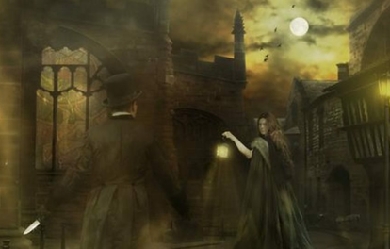
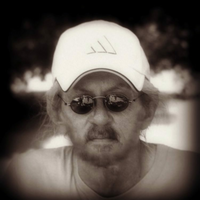
I am an enthusiastic scholar of American, Irish, and English history, Victorian literature, myths, legends, folklore, and Pagan religions. My prose and poetry are generally Gothic in theme and usually set in historical periods. My favourite authors are Edgar Allen Poe, Samuel Clemens, Charles Dickens, Henry James, Sir Arthur Conan Doyle, H.P. Lovecraft, M. R. James, Washington Irving, and Oscar Wilde, just to name a few, and my favourite poets are Keats, Byron, Yeats, Wordsworth, Tennyson, and Longfellow. I have three books of poetry currently on the market, three Gothic novels, one anthology of six horror stories, and several novellas and novelettes. I was raised in Wheatridge, Colorado and attended The University of Colorado at Denver. I currently live in Corvallis, Montana in the great Pacific Northwest.


Charles Lutwidge Dodgson (27 January 1832 – 14 January 1898), better known by the pseudonym Lewis Carroll, was an English author, mathematician, logician, Anglican deacon and photographer. His most famous writings are Alice's Adventures in Wonderland and its sequel Through the Looking-Glass, as well as the poems "The Hunting of the Snark" and "Jabberwocky", all examples of the genre of literary nonsense. He is noted for his facility at word play, logic, and fantasy, and there are societies in many parts of the world (including the United Kingdom, Japan, the United States, and New Zealand) dedicated to the enjoyment and promotion of his works and the investigation of his life. Antecedents Dodgson's family was predominantly northern English, with Irish connections. Conservative and High Church Anglican, most of Dodgson's ancestors were army officers or Church of England clergy. His great-grandfather, also named Charles Dodgson, had risen through the ranks of the church to become the Bishop of Elphin. His grandfather, another Charles, had been an army captain, killed in action in Ireland in 1803 when his two sons were hardly more than babies. His mother's name was Frances Jane Lutwidge. The elder of these sons – yet another Charles Dodgson – was Carroll's father. He reverted to the other family tradition and took holy orders. He went to Westminster School, and then to Christ Church, Oxford. He was mathematically gifted and won a double first degree, which could have been the prelude to a brilliant academic career. Instead he married his first cousin in 1827 and became a country parson. Dodgson was born in the little parsonage of Daresbury in Cheshire near the towns of Warrington and Runcorn, the eldest boy but already the third child of the four-and-a-half-year-old marriage. Eight more children were to follow. When Charles was 11, his father was given the living of Croft-on-Tees in North Yorkshire, and the whole family moved to the spacious rectory. This remained their home for the next twenty-five years. Young Charles' father was an active and highly conservative cleric of the Church of England who later became the Archdeacon of Richmond and involved himself, sometimes influentially, in the intense religious disputes that were dividing the church. He was High Church, inclining to Anglo-Catholicism, an admirer of John Henry Newman and the Tractarian movement, and did his best to instill such views in his children. Young Charles was to develop an ambiguous relationship with his father's values and with the Church of England as a whole. Education Home life During his early youth, Dodgson was educated at home. His "reading lists" preserved in the family archives testify to a precocious intellect: at the age of seven the child was reading The Pilgrim's Progress. He also suffered from a stammer – a condition shared by most of his siblings – that often influenced his social life throughout his years. At age twelve he was sent to Richmond Grammar School (now part of Richmond School) at nearby Richmond. Rugby In 1846, young Dodgson moved on to Rugby School, where he was evidently less happy, for as he wrote some years after leaving the place: I cannot say ... that any earthly considerations would induce me to go through my three years again ... I can honestly say that if I could have been ... secure from annoyance at night, the hardships of the daily life would have been comparative trifles to bear. Scholastically, though, he excelled with apparent ease. "I have not had a more promising boy at his age since I came to Rugby", observed R.B. Mayor, then Mathematics master. Oxford He left Rugby at the end of 1849 and matriculated at Oxford in May 1850 as a member of his father's old college, Christ Church. After waiting for rooms in college to become available, he went into residence in January 1851. He had been at Oxford only two days when he received a summons home. His mother had died of "inflammation of the brain" – perhaps meningitis or a stroke – at the age of forty-seven. His early academic career veered between high promise and irresistible distraction. He did not always work hard, but was exceptionally gifted and achievement came easily to him. In 1852 he obtained first-class honours in Mathematics Moderations, and was shortly thereafter nominated to a Studentship by his father's old friend, Canon Edward Pusey. In 1854 he obtained first-class honours in the Final Honours School of Mathematics, graduating Bachelor of Arts. He remained at Christ Church studying and teaching, but the next year he failed an important scholarship through his self-confessed inability to apply himself to study. Even so, his talent as a mathematician won him the Christ Church Mathematical Lectureship in 1855, which he continued to hold for the next twenty-six years. Despite early unhappiness, Dodgson was to remain at Christ Church, in various capacities, until his death. Character and appearance Health challenges The young adult Charles Dodgson was about six feet tall, slender, and had curling brown hair and blue or grey eyes (depending on the account). He was described in later life as somewhat asymmetrical, and as carrying himself rather stiffly and awkwardly, though this may be on account of a knee injury sustained in middle age. As a very young child, he suffered a fever that left him deaf in one ear. At the age of seventeen, he suffered a severe attack of whooping cough, which was probably responsible for his chronically weak chest in later life. Another defect he carried into adulthood was what he referred to as his "hesitation", a stammer he acquired in early childhood and which plagued him throughout his life. The stammer has always been a potent part of the conceptions of Dodgson; it is part of the belief that he stammered only in adult company and was free and fluent with children, but there is no evidence to support this idea. Many children of his acquaintance remembered the stammer while many adults failed to notice it. Dodgson himself seems to have been far more acutely aware of it than most people he met; it is said he caricatured himself as the Dodo in Alice's Adventures in Wonderland, referring to his difficulty in pronouncing his last name, but this is one of the many "facts" often-repeated, for which no firsthand evidence remains. He did indeed refer to himself as the dodo, but that this was a reference to his stammer is simply speculation. Although Dodgson's stammer troubled him, it was never so debilitating that it prevented him from applying his other personal qualities to do well in society. At a time when people commonly devised their own amusements and when singing and recitation were required social skills, the young Dodgson was well-equipped to be an engaging entertainer. He reportedly could sing tolerably well and was not afraid to do so before an audience. He was adept at mimicry and storytelling, and was reputedly quite good at charades. Social connections In the interim between his early published writing and the success of the Alice books, Dodgson began to move in the Pre-Raphaelite social circle. He first met John Ruskin in 1857 and became friendly with him. He developed a close relationship with Dante Gabriel Rossetti and his family, and also knew William Holman Hunt, John Everett Millais, and Arthur Hughes, among other artists. He also knew the fairy-tale author George MacDonald well – it was the enthusiastic reception of Alice by the young MacDonald children that convinced him to submit the work for publication. Politics, religion and philosophy In broad terms, Dodgson has traditionally been regarded as politically, religiously, and personally conservative. Martin Gardner labels Dodgson as a Tory who was "awed by lords and inclined to be snobbish towards inferiors." The Revd W. Tuckwell, in his Reminiscences of Oxford (1900), regarded him as "austere, shy, precise, absorbed in mathematical reverie, watchfully tenacious of his dignity, stiffly conservative in political, theological, social theory, his life mapped out in squares like Alice's landscape." However, Dodgson also expressed interest in philosophies and religions that seem at odds with this assessment. For example, he was a founding member of the Society for Psychical Research. It has been argued by the proponents of the 'Carroll Myth' that these factors require a reconsideration of Gardner's diagnosis, and that perhaps, Dodgson's true outlook was more complex than previously believed (see 'the Carroll Myth' below). Dodgson wrote some studies of various philosophical arguments. In 1895, he developed a philosophical regressus-argument on deductive reasoning in his article "What the Tortoise Said to Achilles", which appeared in one of the early volumes of the philosophical journal Mind. The article was reprinted in the same journal a hundred years later, in 1995, with a subsequent article by Simon Blackburn titled Practical Tortoise Raising. Artistic activities Literature From a young age, Dodgson wrote poetry and short stories, both contributing heavily to the family magazine Mischmasch and later sending them to various magazines, enjoying moderate success. Between 1854 and 1856, his work appeared in the national publications, The Comic Times and The Train, as well as smaller magazines like the Whitby Gazette and the Oxford Critic. Most of this output was humorous, sometimes satirical, but his standards and ambitions were exacting. "I do not think I have yet written anything worthy of real publication (in which I do not include the Whitby Gazette or the Oxonian Advertiser), but I do not despair of doing so some day," he wrote in July 1855. Sometime after 1850, he did write puppet plays for his siblings' entertainment, of which one has survived, La Guida di Bragia. In 1856 he published his first piece of work under the name that would make him famous. A romantic poem called "Solitude" appeared in The Train under the authorship of "Lewis Carroll." This pseudonym was a play on his real name; Lewis was the anglicised form of Ludovicus, which was the Latin for Lutwidge, and Carroll an Irish surname similar to the Latin name Carolus, from which the name Charles comes. Alice In the same year, 1856, a new Dean, Henry Liddell, arrived at Christ Church, bringing with him his young family, all of whom would figure largely in Dodgson's life and, over the following years, greatly influence his writing career. Dodgson became close friends with Liddell's wife, Lorina, and their children, particularly the three sisters: Lorina, Edith and Alice Liddell. He was for many years widely assumed to have derived his own "Alice" from Alice Liddell. This was given some apparent substance by the fact the acrostic poem at the end of Through the Looking Glass spells out her name, and that there are many superficial references to her hidden in the text of both books. It has been pointed out that Dodgson himself repeatedly denied in later life that his "little heroine" was based on any real child, and frequently dedicated his works to girls of his acquaintance, adding their names in acrostic poems at the beginning of the text. Gertrude Chataway's name appears in this form at the beginning of The Hunting of the Snark, and no one has ever suggested this means any of the characters in the narrative are based on her. Though information is scarce (Dodgson's diaries for the years 1858–1862 are missing), it does seem clear that his friendship with the Liddell family was an important part of his life in the late 1850s, and he grew into the habit of taking the children (first the boy, Harry, and later the three girls) on rowing trips accompanied by an adult friend to nearby Nuneham Courtenay or Godstow. It was on one such expedition, on 4 July 1862, that Dodgson invented the outline of the story that eventually became his first and largest commercial success. Having told the story and been begged by Alice Liddell to write it down, Dodgson eventually (after much delay) presented her with a handwritten, illustrated manuscript entitled Alice's Adventures Under Ground in November 1864. Before this, the family of friend and mentor George MacDonald read Dodgson's incomplete manuscript, and the enthusiasm of the MacDonald children encouraged Dodgson to seek publication. In 1863, he had taken the unfinished manuscript to Macmillan the publisher, who liked it immediately. After the possible alternative titles Alice Among the Fairies and Alice's Golden Hour were rejected, the work was finally published as Alice's Adventures in Wonderland in 1865 under the Lewis Carroll pen-name, which Dodgson had first used some nine years earlier. The illustrations this time were by Sir John Tenniel; Dodgson evidently thought that a published book would need the skills of a professional artist. The overwhelming commercial success of the first Alice book changed Dodgson's life in many ways. The fame of his alter ego "Lewis Carroll" soon spread around the world. He was inundated with fan mail and with sometimes unwanted attention. Indeed, according to one popular story, Queen Victoria herself enjoyed Alice In Wonderland so much that she suggested he dedicate his next book to her, and was accordingly presented with his next work, a scholarly mathematical volume entitled An Elementary Treatise on Determinants. Dodgson himself vehemently denied this story, commenting "...It is utterly false in every particular: nothing even resembling it has occurred"; and it is unlikely for other reasons: as T.B. Strong comments in a Times article, "It would have been clean contrary to all his practice to identify [the] author of Alice with the author of his mathematical works". He also began earning quite substantial sums of money but continued with his seemingly disliked post at Christ Church. Late in 1871, a sequel – Through the Looking-Glass and What Alice Found There – was published. (The title page of the first edition erroneously gives "1872" as the date of publication.) Its somewhat darker mood possibly reflects the changes in Dodgson's life. His father had recently died (1868), plunging him into a depression that lasted some years. The Hunting of the Snark In 1876, Dodgson produced his last great work, The Hunting of the Snark, a fantastical "nonsense" poem, exploring the adventures of a bizarre crew of tradesmen, and one beaver, who set off to find the eponymous creature. The painter Dante Gabriel Rossetti reputedly became convinced the poem was about him. Photography In 1856, Dodgson took up the new art form of photography, first under the influence of his uncle Skeffington Lutwidge, and later his Oxford friend Reginald Southey. He soon excelled at the art and became a well-known gentleman-photographer, and he seems even to have toyed with the idea of making a living out of it in his very early years. A recent study by Roger Taylor and Edward Wakeling exhaustively lists every surviving print, and Taylor calculates that just over fifty percent of his surviving work depicts young girls, though this may be a highly distorted figure as approximately 60% of his original photographic portfolio is now missing, so any firm conclusions are difficult. Dodgson also made many studies of men, women, male children and landscapes; his subjects also include skeletons, dolls, dogs, statues and paintings, and trees. His pictures of children were taken with a parent in attendance and many of the pictures were taken in the Liddell garden, because natural sunlight was required for good exposures. He also found photography to be a useful entrée into higher social circles. During the most productive part of his career, he made portraits of notable sitters such as John Everett Millais, Ellen Terry, Dante Gabriel Rossetti, Julia Margaret Cameron, Michael Faraday and Alfred, Lord Tennyson. Dodgson abruptly ceased photography in 1880. Over 24 years, he had completely mastered the medium, set up his own studio on the roof of Tom Quad, and created around 3, images. Fewer than 1, have survived time and deliberate destruction. He reported that he stopped taking photographs because keeping his studio working was difficult (he used the wet collodion process) and commercial photographers (who started using the dry plate process in the 1870s) took pictures more quickly. With the advent of Modernism, tastes changed, and his photography was forgotten from around 1920 until the 1960s. Inventions To promote letter writing, Dodgson invented The Wonderland Postage-Stamp Case in 1889. This was a cloth-backed folder with twelve slots, two marked for inserting the then most commonly used penny stamp, and one each for the other current denominations to one shilling. The folder was then put into a slip case decorated with a picture of Alice on the front and the Cheshire Cat on the back. All could be conveniently carried in a pocket or purse. When issued it also included a copy of Carroll's pamphletted lecture, Eight or Nine Wise Words About Letter-Writing. Reconstructed nyctograph, with scale demonstrated by a 5 euro cent. Another invention is a writing tablet called the nyctograph for use at night that allowed for note-taking in the dark; thus eliminating the trouble of getting out of bed and striking a light when one wakes with an idea. The device consisted of a gridded card with sixteen squares and system of symbols representing an alphabet of Dodgson's design, using letter shapes similar to the Graffiti writing system on a Palm device. Among the games he devised outside of logic there are a number of word games, including an early version of what today is known as Scrabble. He also appears to have invented, or at least certainly popularised, the Word Ladder (or "doublet" as it was known at first); a form of brain-teaser that is still popular today: the game of changing one word into another by altering one letter at a time, each successive change always resulting in a genuine word. For instance, CAT is transformed into DOG by the following steps: CAT, COT, DOT, DOG. Other items include a rule for finding the day of the week for any date; a means for justifying right margins on a typewriter; a steering device for a velociam (a type of tricycle); new systems of parliamentary representation; more nearly fair elimination rules for tennis tournaments; a new sort of postal money order; rules for reckoning postage; rules for a win in betting; rules for dividing a number by various divisors; a cardboard scale for the college common room he worked in later in life, which, held next to a glass, ensured the right amount of liqueur for the price paid; a double-sided adhesive strip for things like the fastening of envelopes or mounting things in books; a device for helping a bedridden invalid to read from a book placed sideways; and at least two ciphers for cryptography. Mathematical work Within the academic discipline of mathematics, Dodgson worked primarily in the fields of geometry, matrix algebra, mathematical logic and recreational mathematics, producing nearly a dozen books under his real name. Dodgson also developed new ideas in the study of elections (e.g., Dodgson's method) and committees; some of this work was not published until well after his death. He worked as a mathematics tutor at Oxford, an occupation that gave him some financial security. Later years Over the remaining twenty years of his life, throughout his growing wealth and fame, his existence remained little changed. He continued to teach at Christ Church until 1881, and remained in residence there until his death. His last novel, the two-volume Sylvie and Bruno, was published in 1889 and 1893 respectively. It achieved nowhere near the success of the Alice books. Its intricacy was apparently not appreciated by contemporary readers. The reviews and its sales, only 13, copies, were disappointing. The only occasion on which (as far as is known) he travelled abroad was a trip to Russia in 1867 as an ecclesiastical together with the Reverend Henry Liddon. He recounts the travel in his "Russian Journal", which was first commercially published in 1935. On his way to Russia and back Lewis Carroll also saw different cities in Belgium, Germany, the partitioned Poland, and France. He died on 14 January 1898 at his sisters' home, "The Chestnuts" in Guildford, of pneumonia following influenza. He was two weeks away from turning 66 years old. He is buried in Guildford at the Mount Cemetery. Controversies and mysteries "Carroll Myth” Since 1999 a group of scholars, notably Karoline Leach, Hugues Lebailly and Sherry L. Ackerman, John Tufail, Douglas Nickel and others, argue that what Leach terms the "Carroll Myth" has wildly distorted biographical perception of his life and his work. Leach's book, In the Shadow of the Dreamchild, raised a considerable amount of controversy. In brief the claim is that: * In general terms Dodgson's life has been simplified and 'infantilised' by a combination of inaccurate biography and the longstanding unavailability of key evidence, which allowed legends to proliferate unchecked. * By the time the evidence did become available the 'mythic' image of the man had become so embedded in scholastic and popular thinking it remained unquestioned, despite the fact the evidence failed to support it. * If the evidence is examined dispassionately it shows many of the most famous legends about the man (e.g. his 'paedophilia', and his exclusive adoration of small girls) are untrue, or at least grossly simplified. In more detail, Lebailly has endeavoured to set Dodgson's child-photography within the "Victorian Child Cult", which perceived child-nudity as essentially an expression of innocence. Lebailly claims that studies of child nudes were mainstream and fashionable in Dodgson's time and that most photographers, including Oscar Gustave Rejlander and Julia Margaret Cameron, made them as a matter of course. Lebailly continues that child nudes even appeared on Victorian Christmas cards, implying a very different social and aesthetic assessment of such material. Lebailly concludes that it has been an error of Dodgson's biographers to view his child-photography with 20th or 21st century eyes, and to have presented it as some form of personal idiosyncrasy, when it was in fact a response to a prevalent aesthetic and philosophical movement of the time. Leach's reappraisal of Dodgson focused in particular on his controversial sexuality. She argues that the allegations of paedophilia rose initially from a misunderstanding of Victorian morals, as well as the mistaken idea, fostered by Dodgson's various biographers, that he had no interest in adult women. She termed the traditional image of Dodgson "the Carroll Myth". She drew attention to the large amounts of evidence in his diaries and letters that he was also keenly interested in adult women, married and single, and enjoyed several scandalous (by the social standards of his time) relationships with them. She also pointed to the fact that many of those he described as "child-friends" were girls in their late teens and even twenties. She argues that suggestions of paedophilia evolved only many years after his death, when his well-meaning family had suppressed all evidence of his relationships with women in an effort to preserve his reputation, thus giving a false impression of a man interested only in little girls. Similarly, Leach traces the claim that many of Carroll's female friendships ended when the girls reached the age of 14 to a 1932 biography by Langford Reed. The concept of the Carroll Myth has produced polarised reactions from Carroll scholars. In 2004 Contrariwise, the Association for new Lewis Carroll studies. was established, and those such as Carolyn Sigler and Cristopher Hollingsworth have joined the ranks of those calling for a major reassessment. But the concept of the Myth has been opposed by some leading Carroll scholars, in particular Morton N. Cohen and Martin Gardner (their comments, and those of more positive reviewers, can be found on Karoline Leach's own page). Biographer Jenny Woolf, while agreeing that Carroll's image has been comprehensively misrepresented in the past, believes that this can be attributed partly to Carroll's own behaviour and in particular his tendency to self-caricature in later life. Ordination Dodgson had been groomed for the ordained ministry in the Anglican Church from a very early age and was expected, as a condition of his residency at Christ Church, to take holy orders within four years of obtaining his master's degree. He delayed the process for some time but eventually took deacon's orders on 22 December 1861. But when the time came a year later to progress to priestly orders, Dodgson appealed to the dean for permission not to proceed. This was against college rules and initially Dean Liddell told him he would have to consult the college ruling body, which would almost undoubtedly have resulted in his being expelled. For unknown reasons, Dean Liddell changed his mind overnight and permitted Dodgson to remain at the college in defiance of the rules. Uniquely amongst senior students of his time Dodgson never became a priest. There is currently no conclusive evidence about why Dodgson rejected the priesthood. Some have suggested his stammer made him reluctant to take the step, because he was afraid of having to preach. Wilson quotes letters by Dodgson describing difficulty in reading lessons and prayers rather than preaching in his own words. But Dodgson did indeed preach in later life, even though not in priest's orders, so it seems unlikely his impediment was a major factor affecting his choice. Wilson also points out that the then Bishop of Oxford, Samuel Wilberforce, who ordained Dodgson, had strong views against clergy going to the theatre, one of Dodgson's great interests. Others have suggested that he was having serious doubts about Anglicanism. He was interested in minority forms of Christianity (he was an admirer of F.D. Maurice) and "alternative" religions (theosophy). Dodgson became deeply troubled by an unexplained sense of sin and guilt at this time (the early 1860s) and frequently expressed the view in his diaries that he was a "vile and worthless" sinner, unworthy of the priesthood, and this sense of sin and unworthiness may well have affected his decision to abandon being ordained to the priesthood. Missing diaries At least four complete volumes and around seven pages of text are missing from Dodgson's 13 diaries. The loss of the volumes remains unexplained; the pages have been deliberately removed by an unknown hand. Most scholars assume the diary material was removed by family members in the interests of preserving the family name, but this has not been proven. Except for one page, the period of his diaries from which material is missing is between 1853 and 1863 (when Dodgson was 21–31 years old). This was a period when Dodgson began suffering great mental and spiritual anguish and confessing to an overwhelming sense of his own sin. This was also the period of time when he composed his extensive love poetry, leading to speculation that the poems may have been autobiographical. Many theories have been put forward to explain the missing material. A popular explanation for one particular missing page (27 June 1863) is that it might have been torn out to conceal a proposal of marriage on that day by Dodgson to the 11-year-old Alice Liddell; there has never been any evidence to suggest this was so, and a paper discovered by Karoline Leach in the Dodgson family archive in 1996 offers some evidence to the contrary. This paper, known as the "cut pages in diary document", was compiled by various members of Carroll's family after his death. Part of it may have been written at the time the pages were destroyed, though this is unclear. The document offers a brief summary of two diary pages that are now missing, including the one for 27 June 1863. The summary for this page states that Mrs. Liddell told Dodgson there was gossip circulating about him and the Liddell family's governess, as well as about his relationship with "Ina", presumably Alice's older sister, Lorina Liddell. The "break" with the Liddell family that occurred soon after was presumably in response to this gossip. An alternative interpretation has been made regarding Carroll's rumoured involvement with "Ina": Lorina was also the name of Alice Liddell's mother. What is deemed most crucial and surprising is that the document seems to imply Dodgson's break with the family was not connected with Alice at all. Until a primary source is discovered, the events of 27 June 1863 remain inconclusive. Migraine and epilepsy In his diary for 1880, Dodgson recorded experiencing his first episode of migraine with aura, describing very accurately the process of 'moving fortifications' that are a manifestation of the aura stage of the syndrome. Unfortunately there is no clear evidence to show whether this was his first experience of migraine per se, or if he may have previously suffered the far more common form of migraine without aura, although the latter seems most likely, given the fact that migraine most commonly develops in the teens or early adulthood. Another form of migraine aura, Alice in Wonderland Syndrome, has been named after Dodgson's little heroine, because its manifestation can resemble the sudden size-changes in the book. Also known as micropsia and macropsia, it is a brain condition affecting the way objects are perceived by the mind. For example, an afflicted person may look at a larger object, like a basketball, and perceive it as if it were the size of a golf ball. Some authors have suggested that Dodgson may have suffered from this type of aura, and used it as an inspiration in his work, but there is no evidence that he did. Dodgson also suffered two attacks in which he lost consciousness. He was diagnosed by three different doctors; a Dr. Morshead, Dr. Brooks, and Dr. Stedman, believed the attack and a consequent attack to be an "epileptiform" seizure (initially thought to be fainting, but Brooks changed his mind). Some have concluded from this he was a lifetime sufferer of this condition, but there is no evidence of this in his diaries beyond the diagnosis of the two attacks already mentioned. Some authors, in particular Sadi Ranson, have suggested Carroll may have suffered from temporal lobe epilepsy in which consciousness is not always completely lost, but altered, and in which the symptoms mimic many of the same experiences as Alice in Wonderland. Carroll had at least one incidence in which he suffered full loss of consciousness and awoke with a bloody nose, which he recorded in his diary and noted that the episode left him not feeling himself for "quite sometime afterward". This attack was diagnosed as possibly "epileptiform" and Carroll himself later wrote of his "seizures" in the same diary. Most of the standard diagnostic tests of today were not available in the nineteenth century. Recently, Dr Yvonne Hart, consultant neurologist at the Radcliffe Hospital, Oxford, considered Dodgson's symptoms. Her conclusion, quoted in Jenny Woolf's The Mystery of Lewis Carroll, is that Dodgson very likely had migraine, and may have had epilepsy, but she emphasises that she would have considerable doubt about making a diagnosis of epilepsy without further information. Suggestions of paedophilia Stuart Dodgson Collingwood (Dodgson's nephew and biographer) wrote: And now as to the secondary causes which attracted him to children. First, I think children appealed to him because he was pre-eminently a teacher, and he saw in their unspoiled minds the best material for him to work upon. In later years one of his favourite recreations was to lecture at schools on logic; he used to give personal attention to each of his pupils, and one can well imagine with what eager anticipation the children would have looked forward to the visits of a schoolmaster who knew how to make even the dullest subjects interesting and amusing. Despite comments like this, Dodgson's friendships with young girls and psychological readings of his work – especially his photographs of nude or semi-nude girls – have all led to speculation that he was a paedophile. This possibility has underpinned numerous modern interpretations of his life and work, particularly Dennis Potter's play Alice and his screenplay for the motion picture, Dreamchild, Robert Wilson's Alice, and a number of recent biographies, including Michael Bakewell's Lewis Carroll: A Biography (1996), Donald Thomas's Lewis Carroll: A Portrait with Background (1995), and Morton N. Cohen's Lewis Carroll: A Biography (1995). All of these works more or less unequivocally assume that Dodgson was a paedophile, albeit a repressed and celibate one. Cohen claims Dodgson's "sexual energies sought unconventional outlets", and further writes: We cannot know to what extent sexual urges lay behind Charles's preference for drawing and photographing children in the nude. He contended the preference was entirely aesthetic. But given his emotional attachment to children as well as his aesthetic appreciation of their forms, his assertion that his interest was strictly artistic is naïve. He probably felt more than he dared acknowledge, even to himself. Cohen notes that Dodgson "apparently convinced many of his friends that his attachment to the nude female child form was free of any eroticism", but adds that "later generations look beneath the surface" (p. 229). Cohen and other biographers argue that Dodgson may have wanted to marry the 11-year-old Alice Liddell, and that this was the cause of the unexplained "break" with the family in June 1863. There has never been significant evidence to support the idea, however, and the 1996 discovery of the "cut pages in diary document" (see above) seems to make it highly probable that the 1863 "break" had nothing to do with Alice, but was perhaps connected with rumours involving her older sister Lorina (born 11 May 1849, so she would have been 14 at the time), her governess, or her mother who was also nicknamed "Ina". Some writers, e.g., Derek Hudson and Roger Lancelyn Green, stop short of identifying Dodgson as a paedophile, but concur that he had a passion for small female children and next to no interest in the adult world. The basis for Dodgson's interest in female children has been challenged in the last ten years by several writers and scholars (see the 'Carroll Myth' above). Literary works * La Guida di Bragia, a Ballad Opera for the Marionette Theatre (around 1850) * A Tangled Tale * Alice's Adventures in Wonderland (1865) * Facts * Rhyme? And Reason? (also published as Phantasmagoria) * Pillow Problems * Sylvie and Bruno * Sylvie and Bruno Concluded * The Hunting of the Snark (1876) * Three Sunsets and Other Poems * Through the Looking-Glass, and What Alice Found There (includes "Jabberwocky" and "The Walrus and the Carpenter") (1871) * What the Tortoise Said to Achilles Mathematical works * A Syllabus of Plane Algebraic Geometry (1860) * The Fifth Book of Euclid Treated Algebraically (1858 and 1868) * An Elementary Treatise on Determinants, With Their Application to Simultaneous Linear Equations and Algebraic Equations * Euclid and his Modern Rivals (1879), both literary and mathematical in style * Symbolic Logic Part I * Symbolic Logic Part II (published posthumously) * The Alphabet Cipher (1868) * The Game of Logic * Some Popular Fallacies about Vivisection * Curiosa Mathematica I (1888) * Curiosa Mathematica II (1892) * The Theory of Committees and Elections, collected, edited, analysed, and published in 1958, by Duncan Black References Wikipedia - http://en.wikipedia.org/wiki/Lewis_Carroll

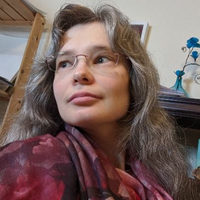
I was born with verse in my blood. I was raised with poetry mixed in with my mother's milk. We were immersed in poetry from our school days; we were taught to read it, appreciate it, glean wisdom from it, knew all the poets of old by heart...Ironcally, in my culture, writing poetry is the high art and privilege of men seasoned by age and gifted by Creator with this rare talent; it was not for the young to 'fool around' with, so we were not taught or encouraged to express ourselves through verse. So I never knew I had it... It was in my young adulthood that I started to feel the Song of the heart stirring in me. A friend shared with me his poetry, showed me that we all have the capability, if only we tune into ourselves and listen. The first few tentative poems were born from under my pen. Then life happened, I tuned out, forgot that part of myself, shut the door on it for more than a decade. I do not know what prompted for my Song to resurface, one day it just started pouring out of me, but I am grateful for the reawakening of that part of my soul that I'd given up for lost, as well as for the people around me who fuel my inspiration. Whether intentionally or not, they keep the fire burning. An enormous Thank You to all of you for reading, commenting, sharing and inspiring. This is a wonderful and nurturing community for all aspiring poets. Prose is the language of the mind, poetry is the language of the soul.
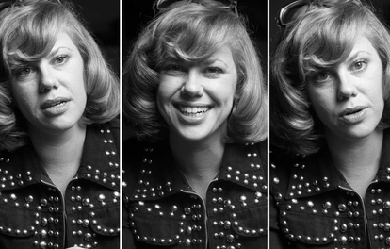
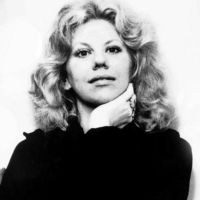
Erica Jong (née Mann; born March 26, 1942) is an American novelist and poet, known particularly for her 1973 novel Fear of Flying. The book became famously controversial for its attitudes towards female sexuality and figured prominently in the development of second-wave feminism. According to Washington Post, it has sold more than 20 million copies worldwide. Born in New York, she was the second of three daughters of Seymore Mann and Eda Mirsky. Attended New York’s Public High School of Music and Art in the 1950’s where she developed her passion for art and writing. As a student at Barnard College, she edited the Barnard Literary Magazine and created poetry programs for the Columbia University campus radio station.

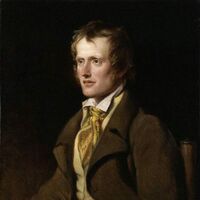
John Clare (13 July 1793 – 20 May 1864) was an English poet, the son of a farm labourer, who came to be known for his celebratory representations of the English countryside and his lamentation of its disruption. His poetry underwent a major re-evaluation in the late 20th century and he is often now considered to be among the most important 19th-century poets. His biographer Jonathan Bate states that Clare was "the greatest labouring-class poet that England has ever produced. No one has ever written more powerfully of nature, of a rural childhood, and of the alienated and unstable self”. Early life Clare was born in Helpston, six miles to the north of the city of Peterborough. In his life time, the village was in the Soke of Peterborough in Northamptonshire and his memorial calls him "The Northamptonshire Peasant Poet". Helpston now lies in the Peterborough unitary authority of Cambridgeshire. He became an agricultural labourer while still a child; however, he attended school in Glinton church until he was twelve. In his early adult years, Clare became a pot-boy in the Blue Bell public house and fell in love with Mary Joyce; but her father, a prosperous farmer, forbade her to meet him. Subsequently he was a gardener at Burghley House. He enlisted in the militia, tried camp life with Gypsies, and worked in Pickworth as a lime burner in 1817. In the following year he was obliged to accept parish relief. Malnutrition stemming from childhood may be the main culprit behind his 5-foot stature and may have contributed to his poor physical health in later life. Early poems Clare had bought a copy of Thomson's Seasons and began to write poems and sonnets. In an attempt to hold off his parents' eviction from their home, Clare offered his poems to a local bookseller named Edward Drury. Drury sent Clare's poetry to his cousin John Taylor of the publishing firm of Taylor & Hessey, who had published the work of John Keats. Taylor published Clare's Poems Descriptive of Rural Life and Scenery in 1820. This book was highly praised, and in the next year his Village Minstrel and other Poems were published. Midlife He had married Martha ("Patty") Turner in 1820. An annuity of 15 guineas from the Marquess of Exeter, in whose service he had been, was supplemented by subscription, so that Clare became possessed of £45 annually, a sum far beyond what he had ever earned. Soon, however, his income became insufficient, and in 1823 he was nearly penniless. The Shepherd's Calendar (1827) met with little success, which was not increased by his hawking it himself. As he worked again in the fields his health temporarily improved; but he soon became seriously ill. Earl FitzWilliam presented him with a new cottage and a piece of ground, but Clare could not settle in his new home. Clare was constantly torn between the two worlds of literary London and his often illiterate neighbours; between the need to write poetry and the need for money to feed and clothe his children. His health began to suffer, and he had bouts of severe depression, which became worse after his sixth child was born in 1830 and as his poetry sold less well. In 1832, his friends and his London patrons clubbed together to move the family to a larger cottage with a smallholding in the village of Northborough, not far from Helpston. However, he felt only more alienated. His last work, the Rural Muse (1835), was noticed favourably by Christopher North and other reviewers, but this was not enough to support his wife and seven children. Clare's mental health began to worsen. As his alcohol consumption steadily increased along with his dissatisfaction with his own identity, Clare's behaviour became more erratic. A notable instance of this behaviour was demonstrated in his interruption of a performance of The Merchant of Venice, in which Clare verbally assaulted Shylock. He was becoming a burden to Patty and his family, and in July 1837, on the recommendation of his publishing friend, John Taylor, Clare went of his own volition (accompanied by a friend of Taylor's) to Dr Matthew Allen's private asylum High Beach near Loughton, in Epping Forest. Taylor had assured Clare that he would receive the best medical care. Later life and death During his first few asylum years in Essex (1837–1841), Clare re-wrote famous poems and sonnets by Lord Byron. His own version of Child Harold became a lament for past lost love, and Don Juan, A Poem became an acerbic, misogynistic, sexualised rant redolent of an aging Regency dandy. Clare also took credit for Shakespeare's plays, claiming to be the Renaissance genius himself. "I'm John Clare now," the poet claimed to a newspaper editor, "I was Byron and Shakespeare formerly." In 1841, Clare left the asylum in Essex, to walk home, believing that he was to meet his first love Mary Joyce; Clare was convinced that he was married with children to her and Martha as well. He did not believe her family when they told him she had died accidentally three years earlier in a house fire. He remained free, mostly at home in Northborough, for the five months following, but eventually Patty called the doctors in. Between Christmas and New Year in 1841, Clare was committed to the Northampton General Lunatic Asylum (now St Andrew's Hospital). Upon Clare's arrival at the asylum, the accompanying doctor, Fenwick Skrimshire, who had treated Clare since 1820, completed the admission papers. To the enquiry "Was the insanity preceded by any severe or long-continued mental emotion or exertion?", Dr Skrimshire entered: "After years of poetical prosing." He remained here for the rest of his life under the humane regime of Dr Thomas Octavius Prichard, encouraged and helped to write. Here he wrote possibly his most famous poem, I Am. He died on 20 May 1864, in his 71st year. His remains were returned to Helpston for burial in St Botolph’s churchyard. Today, children at the John Clare School, Helpston's primary, parade through the village and place their 'midsummer cushions' around Clare's gravestone (which has the inscriptions "To the Memory of John Clare The Northamptonshire Peasant Poet" and "A Poet is Born not Made") on his birthday, in honour of their most famous resident. The thatched cottage where he was born was bought by the John Clare Education & Environment Trust in 2005 and is restoring the cottage to its 18th century state. Poetry In his time, Clare was commonly known as "the Northamptonshire Peasant Poet". Since his formal education was brief, Clare resisted the use of the increasingly standardised English grammar and orthography in his poetry and prose. Many of his poems would come to incorporate terms used locally in his Northamptonshire dialect, such as 'pooty' (snail), 'lady-cow' (ladybird), 'crizzle' (to crisp) and 'throstle' (song thrush). In his early life he struggled to find a place for his poetry in the changing literary fashions of the day. He also felt that he did not belong with other peasants. Clare once wrote "I live here among the ignorant like a lost man in fact like one whom the rest seemes careless of having anything to do with—they hardly dare talk in my company for fear I should mention them in my writings and I find more pleasure in wandering the fields than in musing among my silent neighbours who are insensible to everything but toiling and talking of it and that to no purpose.” It is common to see an absence of punctuation in many of Clare's original writings, although many publishers felt the need to remedy this practice in the majority of his work. Clare argued with his editors about how it should be presented to the public. Clare grew up during a period of massive changes in both town and countryside as the Industrial Revolution swept Europe. Many former agricultural workers, including children, moved away from the countryside to over-crowded cities, following factory work. The Agricultural Revolution saw pastures ploughed up, trees and hedges uprooted, the fens drained and the common land enclosed. This destruction of a centuries-old way of life distressed Clare deeply. His political and social views were predominantly conservative ("I am as far as my politics reaches 'King and Country'—no Innovations in Religion and Government say I."). He refused even to complain about the subordinate position to which English society relegated him, swearing that "with the old dish that was served to my forefathers I am content." His early work delights both in nature and the cycle of the rural year. Poems such as Winter Evening, Haymaking and Wood Pictures in Summer celebrate the beauty of the world and the certainties of rural life, where animals must be fed and crops harvested. Poems such as Little Trotty Wagtail show his sharp observation of wildlife, though The Badger shows his lack of sentiment about the place of animals in the countryside. At this time, he often used poetic forms such as the sonnet and the rhyming couplet. His later poetry tends to be more meditative and use forms similar to the folks songs and ballads of his youth. An example of this is Evening. His knowledge of the natural world went far beyond that of the major Romantic poets. However, poems such as I Am show a metaphysical depth on a par with his contemporary poets and many of his pre-asylum poems deal with intricate play on the nature of linguistics. His 'bird's nest poems', it can be argued, illustrate the self-awareness, and obsession with the creative process that captivated the romantics. Clare was the most influential poet, aside from Wordsworth to practice in an older style. Revival of interest in the twentieth century Clare was relatively forgotten during the later nineteenth century, but interest in his work was revived by Arthur Symons in 1908, Edmund Blunden in 1920 and John and Anne Tibble in their ground-breaking 1935 2-volume edition. Benjamin Britten set some of 'May' from A Shepherd's Calendar in his Spring Symphony of 1948, and included a setting of The Evening Primrose in his Five Flower Songs Copyright to much of his work has been claimed since 1965 by the editor of the Complete Poetry (OUP, 9 vols., 1984–2003), Professor Eric Robinson though these claims were contested. Recent publishers have refused to acknowledge the claim (especially in recent editions from Faber and Carcanet) and it seems the copyright is now defunct. The John Clare Trust purchased Clare Cottage in Helpston in 2005, preserving it for future generations. In May 2007 the Trust gained £1.m of funding from the Heritage Lottery Fund and commissioned Jefferson Sheard Architects to create the new landscape design and Visitor Centre, including a cafe, shop and exhibition space. The Cottage has been restored using traditional building methods and opened to the public. The largest collection of original Clare manuscripts are housed at Peterborough Museum, where they are available to view by appointment. Since 1993, the John Clare Society of North America has organised an annual session of scholarly papers concerning John Clare at the annual Convention of the Modern Language Association of America. Poetry collections by Clare (chronological) * Poems Descriptive of Rural Life and Scenery. London, 1820. * The Village Minstrel, and Other Poems. London, 1821. * The Shepherd's Calendar with Village Stories and Other Poems. London, 1827 * The Rural Muse. London, 1835. * Sonnet. London 1841 * First Love * Snow Storm. * The Firetail. * The Badger – Time unknown References Wikipedia - http://en.wikipedia.org/wiki/John_Clare
.jpg)
Since as long as I can remember writing has been my escape from insanity. It is my one safe place where all the puzzle pieces fit. From an early age I fell in love with the written word. When I first learned to read I found my lifelong best friend. I can still remember reading poems from Shel Silverstein and being so enthralled that I was just read each and every poem over and over until I had every line of every poem memorized. It didn't take long before I too learned the power was not limited to others words, thoughts, and ideas. Books have always been my inspiration, but I quickly realized I didn't just want to read others words but I wanted to be the words read by others. I wanted to be that voice that inspired others. Writing has always been an innate part of my being and I know this will never change. It is the escape with my pen that has shown me who I am and who I want to be. I hope I can one day inspire others with my passion for the written word just as I was that first time I picked up a book and fell in love. My poems are sometimes dark, often reflecting the shadows in my heart, because I refuse to be dishonest with myself, but there is always light waiting for me when all the lies are gone. I'm truly blessed to have writing as a friend.
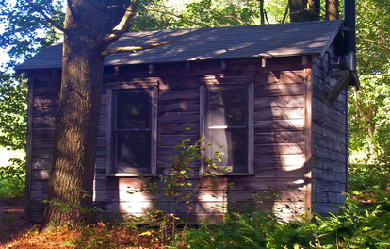
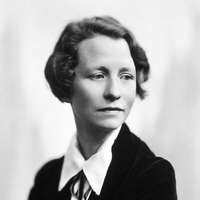
Edna St. Vincent Millay (February 22, 1892 – October 19, 1950) was an American poet and playwright. She received the Pulitzer Prize for Poetry in 1923, the third woman to win the award for poetry, and was also known for her feminist activism. She used the pseudonym Nancy Boyd for her prose work. The poet Richard Wilbur asserted, "She wrote some of the best sonnets of the century."
#Americans #PulitzerPrize #Women #XXCentury
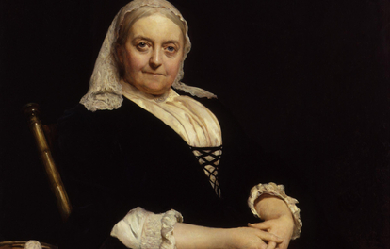
Dinah Maria Craik (born Dinah Maria Mulock, also often credited as Miss Mulock or Mrs. Craik) (20 April 1826– 12 October 1887) was an English novelist and poet born at Stoke-on-Trent to Dinah and Thomas Mulock and raised in Newcastle-under-Lyme, Staffordshire, where her father was then minister of a small congregation. Her childhood and early youth were much affected by his unsettled fortunes, but she obtained a good education from various quarters and felt called to be a writer. Mulock’s early success began with the novel Cola Monti (1849), and in the same year she produced her first three-volume novel, The Ogilvies, to great success.


My name is Jessica Joehanson I am fourteen I live in Farmington Maine and Jesus is my number one. I am an a métier poet. I'm at a very low point in my life but I find myself more and more inspired every day by my crushing heartbreak. I have no plans to become and professional poet it's just a hobby. My poems are based on real life events and my emotions, thoughts, and dreams. My favorite quote is "Somethings are to beautiful captured, you just have to let them be." I am a dreamer and I will always be this way.
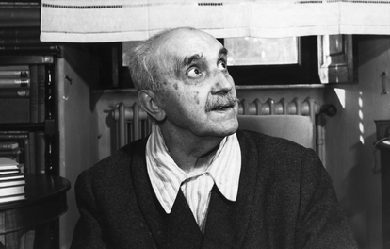
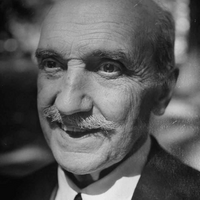
Jorge Agustín Nicolás Ruiz de Santayana y Borrás, known in English as George Santayana (December 16, 1863 – September 26, 1952), was a philosopher, essayist, poet, and novelist. Originally from Spain, Santayana was raised and educated in the United States from the age of eight and identified himself as an American, although he always kept a valid Spanish passport. He wrote in English and is generally considered an American man of letters. At the age of forty-eight, Santayana left his position at Harvard and returned to Europe permanently, never to return to the United States. His last wish was to be buried in the Spanish pantheon in Rome. Santayana is popularly known for aphorisms, such as “Those who cannot remember the past are condemned to repeat it,” “Only the dead have seen the end of war,”, and the definition of beauty as “pleasure objectified”. Although an atheist, he always treasured the Spanish Catholic values, practices and world-view with which he was brought up. Santayana was a broad-ranging cultural critic spanning many disciplines.
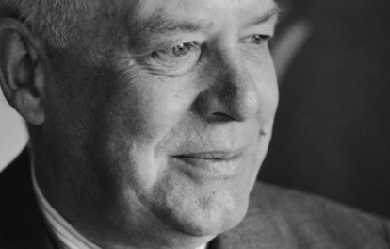
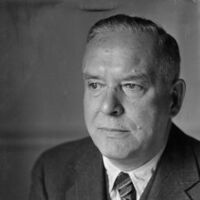
Wallace Stevens was born in Reading, Pennsylvania, on October 2, 1879. He attended Harvard University as an undergraduate from 1897 to 1900. He planned to travel to Paris as a writer, but after a working briefly as a reporter for the New York Herald Times, he decided to study law. He graduated with a degree from New York Law School in 1903 and was admitted to the U.S. Bar in 1904. He practised law in New York City until 1916. Though he had serious determination to become a successful lawyer, Stevens had several friends among the New York writers and painters in Greenwich Village, including the poets William Carlos Williams, Marianne Moore, and E. E. Cummings. In 1914, under the pseudonym "Peter Parasol," he sent a group of poems under the title "Phases" to Harriet Monroe for a war poem competition for Poetry magazine. Stevens did not win the prize, but was published by Monroe in November of that year. Stevens moved to Connecticut in 1916, having found employment at the Hartford Accident and Indemnity Co., of which he became vice president in 1934. He had began to establish an identity for himself outside the world of law and business, however, and his first book of poems, Harmonium, published in 1923, exhibited the influence of both the English Romantics and the French symbolists, an inclination to aesthetic philosophy, and a wholly original style and sensibility: exotic, whimsical, infused with the light and color of an Impressionist painting. For the next several years, Stevens focused on his business life. He began to publish new poems in 1930, however, and in the following year, Knopf published an second edition of Harmonium, which included fourteen new poems and left out three of the decidedly weaker ones. More than any other modern poet, Stevens was concerned with the transformative power of the imagination. Composing poems on his way to and from the office and in the evenings, Stevens continued to spend his days behind a desk at the office, and led a quiet, uneventful life. Though now considered one of the major American poets of the century, he did not receive widespread recognition until the publication of his Collected Poems, just a year before his death. His major works include Ideas of Order (1935), The Man With the Blue Guitar (1937), Notes Towards a Supreme Fiction (1942), and a collection of essays on poetry, The Necessary Angel (1951). Stevens died in Hartford in 1955. Poetry Harmonium (1923) Ideas of Order (1935) Owl's Clover (1936) The Man With the Blue Guitar (1937) Notes Towards a Supreme Fiction (1942) Parts of a World (1942) Esthétique du Mal (1945) Three Academic Pieces (1947) Transport to Summer (1947) Primitive Like an Orb (1948) Auroras of Autumn (1950) Collected Poems (1954) Opus Posthumous (1957) The Palm at the End of the Mind (1967) Prose The Necessary Angel (1951) Plays Three Travellers Watch the Sunrise (1916) Carlos Among the Candles (1917) References Poets.org — http://www.poets.org/poet.php/prmPID/124
#Americans Modern
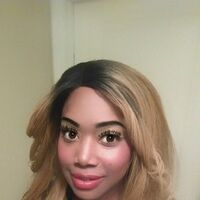
I am a starving Artist.....waiting for my big Break!!! I am a person of wisdom, who has been through different obstacles in my life to become who I am. I am hard working and honest. I have only a few close people in my life to keep me sane. Through my continuous journey, I have learned that I can control only my own destiny.In time I would love to motive others to live life to their fullest potential. For if we all commit to ourselves, we can help make the world a better place. I have come a long way from the clumsy, awkward, misunderstood, young child, and teen. I have grown into who I want to be. And will make every effort to forgive myself, and others. By doing this I will be able to complete self. And that's my mission in life.
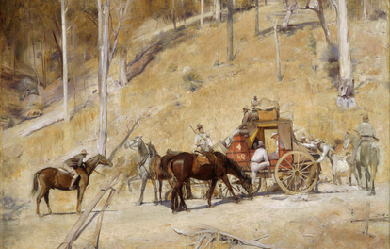
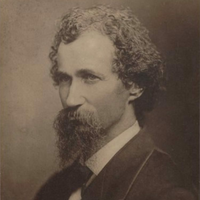
Thomas Henry Kendall (18 April 1839– 1 August 1882) was a nineteenth-century Australian author and bush poet, who was particularly known for his poems and tales set in a natural environment setting. Kendall was born in a settler’s hut by Yackungarrah Creek in Yatte Yattah near Ulladulla, New South Wales. He was registered as Thomas Henry Kendall, but never appears to have used his first name. His three volumes of verse were all published under the name of “Henry Kendall”. His father, Basil Kendall, was the son of the Rev. Thomas Kendall who came to Sydney in 1809 and five years later went as a missionary to New Zealand.
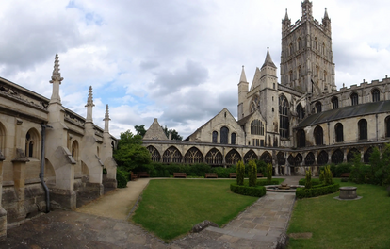

William Ernest Henley (23 August 1849 – 11 July 1903) was an English poet, critic and editor, best remembered for his 1875 poem “Invictus”. Henley was born in Gloucester and was the oldest of a family of six children, five sons and a daughter. His father, William, a bookseller and stationer, died in 1868 and was survived by young children and creditors. His mother, Mary Morgan, was descended from the poet and critic Joseph Wharton. Between 1861 and 1867, Henley was a pupil at the Crypt Grammar School (founded 1539).

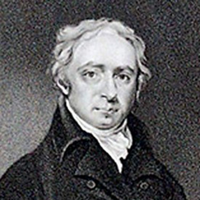
William Lisle Bowles (24 September 1762– 7 April 1850) was an English priest, poet and critic. Life and career Bowles was born at King’s Sutton, Northamptonshire, where his father was vicar. At the age of 14 he entered Winchester College, where the headmaster at the time was Dr Joseph Warton. In 1781 Bowles left as captain of the school, and went on to Trinity College, Oxford, where he had won a scholarship. Two years later he won the Chancellor’s prize for Latin verse. Bowles came from a line of Church of England clergymen. His great-grandfather Matthew Bowles (1652–1742), grandfather Dr Thomas Bowles (1696–1773) and father William Thomas Bowles (1728–86) had all been parish priests. After taking his degree at Oxford, Bowles followed his forebears into the Church of England, and in 1792, after serving as curate in Donhead St Andrew, was appointed vicar of Chicklade in Wiltshire. In 1797 he received the vicarage of Dumbleton in Gloucestershire, and in 1804 became vicar of Bremhill in Wiltshire, where he wrote the poem seen on Maud Heath’s statue. In the same year his bishop, John Douglas, collated him to a prebendal stall in Salisbury Cathedral. In 1818 he was made chaplain to the Prince Regent, and in 1828 he was elected residentiary canon of Salisbury. Works * In 1789 he published, in a very small quarto volume, Fourteen Sonnets, which were received with extraordinary favour, not only by the general public, but by such men as Samuel Taylor Coleridge and Wordsworth. * The Sonnets even in form were a revival, a return to an older and purer poetic style, and by their grace of expression, melodious versification, tender tone of feeling and vivid appreciation of the life and beauty of nature, stood out in strong contrast to the elaborated commonplaces which at that time formed the bulk of English poetry. Bowles said thereof Poetic trifles from solitary rambles whilst chewing the cud of sweet and bitter fancy, written from memory, confined to fourteen lines, this seemed best adapted to the unity of sentiment, the verse flowed in unpremeditated harmony as my ear directed but are far from being mere elegiac couplets. * The longer poems published by Bowles are not of a very high standard, though all are distinguished by purity of imagination, cultured and graceful diction, and great tenderness of feeling. The most extensive were The Spirit of Discovery (1804), which was mercilessly ridiculed by Lord Byron; The Missionary (1813); The Grave of the Last Saxon (1822); and St John in Patmos (1833). Bowles is perhaps more celebrated as a critic than as a poet.In 1806 he published an edition of Alexander Pope’s works with notes and an essay, in which he laid down certain canons as to poetic imagery which, subject to some modification, were later accepted, but which were received at the time with strong opposition by admirers of Pope and his style. The controversy brought into sharp contrast the opposing views of poetry, which may be roughly described as the natural and the artificial. * Bowles was an amiable, absent-minded, and rather eccentric man. His poems are characterised by refinement of feeling, tenderness, and pensive thought, but are deficient in power and passion. Bowles maintained that images drawn from nature are poetically finer than those drawn from art; and that in the highest kinds of poetry the themes or passions handled should be of the general or elemental kind, and not the transient manners of any society. These positions were attacked by Byron, Thomas Campbell, William Roscoe and others, while for a time Bowles was almost solitary. William Hazlitt and the Blackwood critics came to his assistance, and on the whole Bowles had reason to congratulate himself on having established certain principles which might serve as the basis of a true method of poetical criticism, and of having inaugurated, both by precept and by example, a new era in English poetry. Among other prose works from his prolific pen was a Life of Bishop Ken (two volumes, 1830–1831). Other works include Coombe Ellen and St. Michael’s Mount (1798), The Battle of the Nile (1799), and The Sorrows of Switzerland (1801). * Bowles also enjoyed considerable reputation as an antiquary, his principal work in that department being Hermes Britannicus (1828). His Poetical Works were collected in 1855 as part of the Library Edition of the British Poets, with a memoir by George Gilfillan. Reception * Bowles’ work was important to the young Samuel Taylor Coleridge: * Bowles was the cause in the 1820s of the Alexander Pope controversy into which George Gordon, Lord Byron was drawn. References Wikipedia—https://en.wikipedia.org/wiki/William_Lisle_Bowles
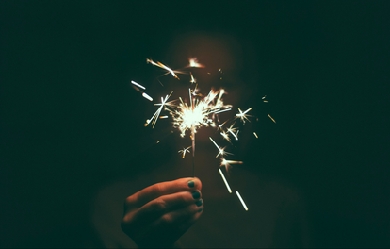

Born and raised in Soweto. God, my family and sports and music are the most important things in my life. I started writing poems as a hobby and then developed a greater liking for it. The poems I write are based on the emotions I feel at that time, but also sometimes they are inspired by music & movies. I write poetry to entertain and inspire other people to better themselves and that through them, they will learn & most importantly, know how strong and mighty God is.

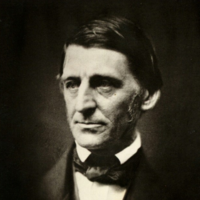
Ralph Waldo Emerson (May 25, 1803 – April 27, 1882), who went by his middle name Waldo, was an American essayist, lecturer, philosopher, abolitionist, and poet who led the Transcendentalist movement of the mid-19th century. He was seen as a champion of individualism and critical thinking, as well as a prescient critic of the countervailing pressures of society and conformity. Friedrich Nietzsche thought he was “the most gifted of the Americans,” and Walt Whitman called him his “master”.
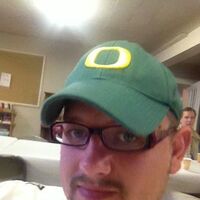
I work hard and play hard. I am a dad and that is the most important attribute about my self. I have a strong belief in God and trust that he guides me. I also have a soft heart and writing helps getting out the pain i may feel or i may just simply be sharing things i have written in the past. I love to write I do not claim to be good at it, but i enjoy it so much. Writing is my reading. I do not like to read books so writing is my way of exercising my brain. Feel free to critique my writing if it helps me then i thank you, if it is just to banter me then keep it to your self.
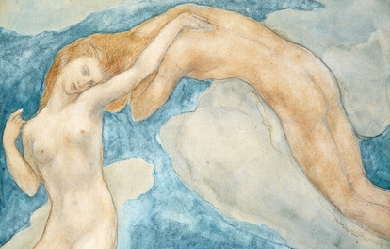
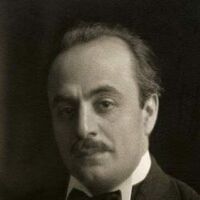
Khalil Gibran (January 6, 1883 – April 10, 1931); born Gubran Khalil Gubran, was a Lebanese-American artist, poet, and writer. Born in the town of Bsharri in modern-day Lebanon (then part of the Ottoman Mount Lebanon mutasarrifate), as a young man he emigrated with his family to the United States where he studied art and began his literary career. In the Arab world, Gibran is regarded as a literary and political rebel. His Romantic style was at the heart of a renaissance in modern Arabic literature, especially prose poetry, breaking away from the classical school. In Lebanon, he is still celebrated as a literary hero. He is chiefly known in the English-speaking world for his 1923 book The Prophet, an early example of inspirational fiction including a series of philosophical essays written in poetic English prose. The book sold well despite a cool critical reception, gaining popularity in the 1930s and again especially in the 1960s counterculture. Gibran is the third best-selling poet of all time, behind Shakespeare and Lao-Tzu.

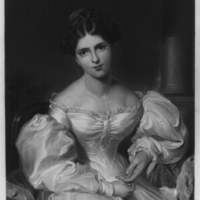
Frances Anne “Fanny” Kemble (27 November 1809– 15 January 1893) was a notable British actress from a theatre family in the early and mid-19th century. She was a well-known and popular writer, whose published works included plays, poetry, eleven volumes of memoirs, travel writing and works about the theatre.


Dylan Marlais Thomas (27 October 1914 – 9 November 1953) was a Welsh poet and writer who wrote exclusively in English. In addition to poetry, he wrote short stories and scripts for film and radio, which he often performed himself. His public readings, particularly in America, won him great acclaim; his sonorous voice with a subtle Welsh lilt became almost as famous as his works. His best-known works include the “play for voices” Under Milk Wood and the celebrated villanelle for his dying father, “Do not go gentle into that good night”. Appreciative critics have also noted the craftsmanship and compression of poems such as “In my Craft or Sullen Art”, and the rhapsodic lyricism in “And death shall have no dominion” and “Fern Hill”.
I have been writing poetry since 2011 and I love doing it because I can express myself. I was bored one day and pick up a pen and paper and started putting words together on paper and now I am passionate about it. I write songs and short stories also but I am more better at writing poetry. I love music very much and I love fashion.
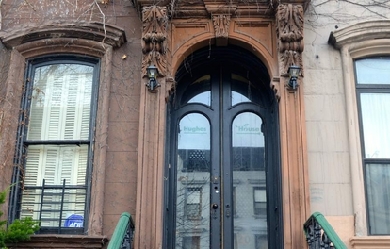
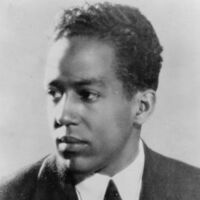
James Mercer Langston Hughes (February 1, 1902 – May 22, 1967) was an American poet, social activist, novelist, playwright, and columnist. He was one of the earliest innovators of the then-new literary art form jazz poetry. Hughes is best known for his work during the Harlem Renaissance. He famously wrote about the period that “the negro was in vogue” which was later paraphrased as “when Harlem was in vogue”.

Born in Srilanka, I migrated to Canada in 1999. I was a teacher and Lecturer in Srilanka, where I taught both in secondary schools, teachers' colleges and some part-time work at the university of Jaffna. I have also about eight years of teaching experience in Nigeria. I also taught in Canada-both as a supply teacher and an ESL teacher for newcomers to Canada. My teaching subjects were Geography, English, Western History and Principles of Education. I had interest in writing poetry right from my school days, though I am not an expert at it. I am always trying to improve and joining the poet's sanctuary is an outcome of that intention.

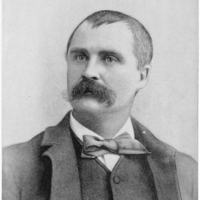
John Boyle O’Reilly (28 June 1844–10 August 1890) was an Irish-born poet, journalist and fiction writer. As a youth in Ireland, he was a member of the Irish Republican Brotherhood, or Fenians, for which he was transported to Western Australia. After escaping to the United States, he became a prominent spokesperson for the Irish community and culture, through his editorship of the Boston newspaper The Pilot, his prolific writing, and his lecture tours.
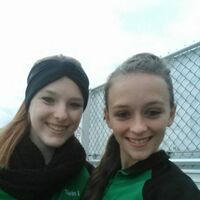
Hey everyone!!!:) My name is crystal R. Things about me...:) . Varsity cheerleader at my high school . Short .Loud .shy .competitive .nice . sometimes funny .Favorite subject is math .Favorite colors are baby blue and pink Sports I played/play....:) . Basketball .Track .Volley ball .cheerleading My writing....:) . I only write poems . About love, life, friends, struggles, just basically anything . Started writing in 4th grade then I stopped then started writing again in 7th grade .I write because it's a good way to express myself. Oh, and to anyone who follows me, read my stuff, or comment on anything of mine, I wanna say thank you:) And please if you read my stuff to please comment:) And I know I'm not the best writer but please comment:) Thanks:) And if you have any questions about me or anything feel free to message me:)
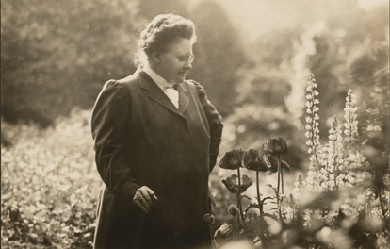
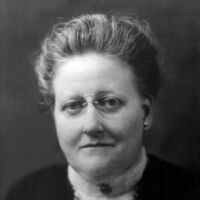
Amy Lawrence Lowell (February 9, 1874 – May 12, 1925) was an American poet of the imagist school from Brookline, Massachusetts, who posthumously won the Pulitzer Prize for Poetry in 1926. Amy was born into Brookline’s Lowell family, sister to astronomer Percival Lowell and Harvard president Abbott Lawrence Lowell. She never attended college because her family did not consider it proper for a woman to do so. She compensated for this lack with avid reading and near-obsessive book collecting. She lived as a socialite and travelled widely, turning to poetry in 1902 (age 28) after being inspired by a performance of Eleonora Duse in Europe.
#Americans #Lesbian #PulitzerPrize #Women
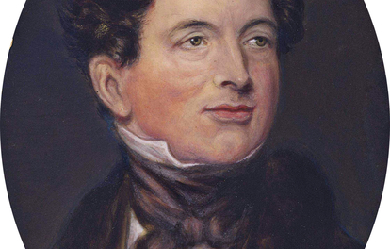
.jpeg)
Thomas Moore (28 May 1779 – 25 February 1852), also known as Tom Moore, was an Irish writer, poet, and lyricist celebrated for his Irish Melodies. His setting of English-language verse to old Irish tunes marked the transition in popular Irish culture from Irish to English. Politically, Moore was recognised in England as a press, or "squib", writer for the aristocratic Whigs; in Ireland he was accounted a Catholic patriot.
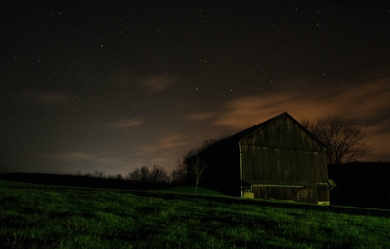
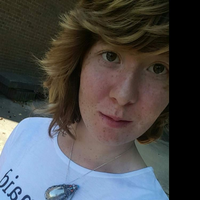
I don't write to please Only to put this need at ease I can't force my poems, spontanious as fire They flow in when they desire Like emotions, they never seem to dim It's my job to scramble; keeping up with them So they are not a loss of time To view my work I won't charge one dime All my hardships are not my demise This life I live is such a prize
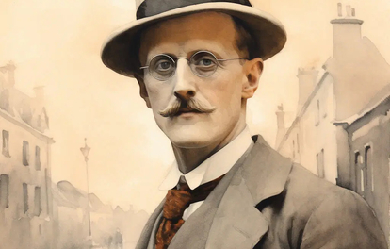
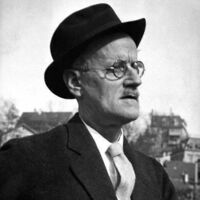
James Augustine Aloysius Joyce (2 February 1882 – 13 January 1941) was an Irish novelist and poet, considered to be one of the most influential writers in the modernist avant-garde of the early 20th century. Joyce is best known for Ulysses (1922), a landmark work in which the episodes of Homer's Odyssey are paralleled in an array of contrasting literary styles, perhaps most prominently the stream of consciousness technique he perfected. Other major works are the short-story collection Dubliners (1914), and the novels A Portrait of the Artist as a Young Man (1916) and Finnegans Wake (1939). His complete oeuvre includes three books of poetry, a play, occasional journalism, and his published letters.
I have been a hopeless romantic since I was a young boy. I have always been drawn to relationships and the experience of love. The exhilaration and emotions that flood into and coarse through those that are in love is the most intoxicating feeling possible, at least in my opinion. As you read these poems, you are reading my story. I write about my thoughts, my feelings, and my experiences. Forgive me if my writings are not of your flavor as I never did read much poetry from others.
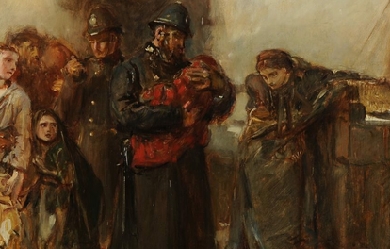
.jpg)
Sir William Schwenck Gilbert (18 November 1836– 29 May 1911) was an English dramatist, librettist, poet and illustrator best known for the fourteen comic operas (known as the Savoy operas) produced in collaboration with the composer Sir Arthur Sullivan. The most famous of these include H.M.S. Pinafore, The Pirates of Penzance and one of the most frequently performed works in the history of musical theatre, The Mikado. These, as well as several of the other Savoy operas, continue to be frequently performed in the English-speaking world and beyond by opera companies, repertory companies, schools and community theatre groups. Lines from these works have become part of the English language, such as “short, sharp shock”, “What, never? Well, hardly ever!”, and “Let the punishment fit the crime”. Gilbert also wrote the Bab Ballads, an extensive collection of light verse accompanied by his own comical drawings. His creative output included over 75 plays and libretti, numerous stories, poems, lyrics and various other comic and serious pieces. His plays and realistic style of stage direction inspired other dramatists, including Oscar Wilde and George Bernard Shaw. According to The Cambridge History of English and American Literature, Gilbert’s “lyrical facility and his mastery of metre raised the poetical quality of comic opera to a position that it had never reached before and has not reached since”. Early life and career Beginnings Gilbert was born at 17 Southampton Street, Strand, London. His father, also named William, was briefly a naval surgeon, who later became a writer of novels and short stories, some of which were illustrated by his son. Gilbert’s mother was the former Anne Mary Bye Morris (1812–1888), the daughter of Thomas Morris, an apothecary. Gilbert’s parents were distant and stern, and he did not have a particularly close relationship with either of them. They quarrelled increasingly, and following the break-up of their marriage in 1876, his relationships with them, especially his mother, became even more strained. Gilbert had three younger sisters, two of whom were born outside England because of the family’s travels during these years: Jane Morris (b. 1838 in Milan, Italy– 1906), who married Alfred Weigall, a miniatures painter; Anne Maude (1845–1932) and Mary Florence (b. 1843 in Boulogne, France– 1911), neither of whom married. Gilbert was nicknamed “Bab” as a baby, and then “Schwenck”, after his father’s godparents. As a child, Gilbert travelled to Italy in 1838 and then France for two years with his parents, who finally returned to settle in London in 1847. He was educated at Boulogne, France from the age of seven (he later kept his diary in French so that the servants could not read it), then at Western Grammar School, Brompton, London, and then at the Great Ealing School, where he became head boy and wrote plays for school performances and painted scenery. He then attended King’s College London, graduating in 1856. He intended to take the examinations for a commission in the Royal Artillery, but with the end of the Crimean War, fewer recruits were needed, and the only commission available to Gilbert would have been in a line regiment. Instead he joined the Civil Service: he was an assistant clerk in the Privy Council Office for four years and hated it. In 1859 he joined the Militia, a part-time volunteer force formed for the defence of Britain, with which he served until 1878 (in between writing and other work), reaching the rank of Captain. In 1863 he received a bequest of £300 that he used to leave the civil service and take up a brief career as a barrister (he had already entered the Inner Temple as a student), but his legal practice was not successful, averaging just five clients a year. To supplement his income from 1861 on, Gilbert wrote a variety of stories, comic rants, grotesque illustrations, theatre reviews (many in the form of a parody of the play being reviewed), and, under the pseudonym “Bab” (his childhood nickname), illustrated poems for several comic magazines, primarily Fun, started in 1861 by H. J. Byron. He published stories, articles, and reviews in papers such as the Cornhill Magazine, London Society, Tinsley’s Magazine and Temple Bar. In addition, Gilbert was the London correspondent for L’Invalide Russe and a drama critic for the Illustrated London Times. In the 1860s he also contributed to Tom Hood’s Christmas annuals, to Saturday Night, the Comic News and the Savage Club Papers. The Observer newspaper in 1870 sent him to France as a war correspondent reporting on the Franco-Prussian War. The poems, illustrated humorously by Gilbert, proved immensely popular and were reprinted in book form as the Bab Ballads. He would later return to many of these as source material for his plays and comic operas. Gilbert and his colleagues from Fun, including Tom Robertson, Tom Hood, Clement Scott and F. C. Burnand (who defected to Punch in 1862) frequented the Arundel Club, the Savage Club, and especially Evans’s café, where they had a table in competition with the Punch 'Round table’. After a relationship in the mid-1860s with novelist Annie Thomas, Gilbert married Lucy Agnes Turner, whom he called “Kitty”, in 1867; she was 11 years his junior. He wrote many affectionate letters to her over the years. Gilbert and Lucy were socially active both in London and later at Grim’s Dyke, often holding dinner parties and being invited to others’ homes for dinner, in contrast to the picture painted by fictionalisations such as the film Topsy-Turvy. The Gilberts had no children, but they had many pets, including some exotic ones. First plays Gilbert wrote and directed a number of plays at school, but his first professionally produced play was Uncle Baby, which ran for seven weeks in the autumn of 1863. In 1865–66, Gilbert collaborated with Charles Millward on several pantomimes, including one called Hush-a-Bye, Baby, On the Tree Top, or, Harlequin Fortunia, King Frog of Frog Island, and the Magic Toys of Lowther Arcade (1866). Gilbert’s first solo success, however, came a few days after Hush-a-Bye Baby premiered. His friend and mentor, Tom Robertson, was asked to write a pantomime but did not think he could do it in the two weeks available, and so he recommended Gilbert instead. Written and rushed to the stage in 10 days, Dulcamara, or the Little Duck and the Great Quack, a burlesque of Gaetano Donizetti’s L’elisir d’amore, proved extremely popular. This led to a long series of further Gilbert opera burlesques, pantomimes and farces, full of awful puns (traditional in burlesques of the period), though showing, at times, signs of the satire that would later be a defining part of Gilbert’s work. For instance: This was followed by Gilbert’s penultimate operatic parody, Robert the Devil, a burlesque of Giacomo Meyerbeer’s opera, Robert le diable, which was part of a triple bill that opened the Gaiety Theatre, London in 1868. The piece was Gilbert’s biggest success to date, running for over 100 nights and being frequently revived and played continuously in the provinces for three years thereafter. In Victorian theatre, "[to degrade] high and beautiful themes... had been the regular proceeding in burlesque, and the age almost expected it" However, Gilbert’s burlesques were considered unusually tasteful compared to the others on the London stage. Isaac Goldberg wrote that these pieces “reveal how a playwright may begin by making burlesque of opera and end by making opera of burlesque.” Gilbert would depart even further from the burlesque style from about 1869 with plays containing original plots and fewer puns. His first full-length prose comedy was An Old Score (1869). German Reed entertainments and other plays of the early 1870s Theatre, at the time Gilbert began writing, had fallen into disrepute. Badly translated and adapted French operettas and poorly written, prurient Victorian burlesques dominated the London stage. As Jessie Bond vividly described it, “stilted tragedy and vulgar farce were all the would-be playgoer had to choose from, and the theatre had become a place of evil repute to the righteous British householder.” From 1869 to 1875, Gilbert joined with one of the leading figures in theatrical reform, Thomas German Reed (and his wife Priscilla), whose Gallery of Illustration sought to regain some of theatre’s lost respectability by offering family entertainments in London. So successful were they that by 1885 Gilbert stated that original British plays were appropriate for an innocent 15-year-old girl in the audience. Three months before the opening of Gilbert’s last burlesque (The Pretty Druidess), the first of his pieces for the Gallery of Illustration, No Cards, was produced. Gilbert created six musical entertainments for the German Reeds, some with music composed by Thomas German Reed himself. The environment of the German Reeds’ intimate theatre allowed Gilbert quickly to develop a personal style and freedom to control all aspects of production, including set, costumes, direction and stage management. These works were a success, with Gilbert’s first big hit at the Gallery of Illustration, Ages Ago, opening in 1869. Ages Ago was also the beginning of a collaboration with the composer Frederic Clay that would last seven years and produce four works. It was at a rehearsal for Ages Ago that Clay formally introduced Gilbert to his friend, Arthur Sullivan. The Bab Ballads and Gilbert’s many early musical works gave him much practice as a lyricist even before his collaboration with Sullivan. Many of the plot elements of the German Reed Entertainments (as well as some from his earlier plays and Bab Ballads) would be reused by Gilbert later in the Gilbert and Sullivan operas. These elements include paintings coming to life (Ages Ago, used again in Ruddigore), a deaf nursemaid binding a respectable man’s son to a “pirate” instead of to a “pilot” by mistake (Our Island Home, 1870, reused in The Pirates of Penzance), and the forceful mature lady who is “an acquired taste” (Eyes and No Eyes, 1875, reused in The Mikado). During this time, Gilbert perfected the 'topsy-turvy’ style that he had been developing in his Bab Ballads, where the humour was derived by setting up a ridiculous premise and working out its logical consequences, however absurd. Mike Leigh describes the “Gilbertian” style as follows: "With great fluidity and freedom, [Gilbert] continually challenges our natural expectations. First, within the framework of the story, he makes bizarre things happen, and turns the world on its head. Thus the Learned Judge marries the Plaintiff, the soldiers metamorphose into aesthetes, and so on, and nearly every opera is resolved by a deft moving of the goalposts... His genius is to fuse opposites with an imperceptible sleight of hand, to blend the surreal with the real, and the caricature with the natural. In other words, to tell a perfectly outrageous story in a completely deadpan way.” At the same time, Gilbert created several 'fairy comedies’ at the Haymarket Theatre. This series of plays was founded upon the idea of self-revelation by characters under the influence of some magic or some supernatural interference. The first was The Palace of Truth (1870), based partly on a story by Madame de Genlis. In 1871, with Pygmalion and Galatea, one of seven plays that he produced that year, Gilbert scored his greatest hit to date. Together, these plays and their successors such as The Wicked World (1873), Sweethearts (1874), and Broken Hearts (1875), did for Gilbert on the dramatic stage what the German Reed entertainments had done for him on the musical stage: they established that his capabilities extended far beyond burlesque, won him artistic credentials, and demonstrated that he was a writer of wide range, as comfortable with human drama as with farcical humour. The success of these plays, especially Pygmalion and Galatea, gave Gilbert a prestige that would be crucial to his later collaboration with as respected a musician as Sullivan. Though dated, these works demonstrate Gilbert’s desire to give respectable and well-educated theatre audiences comedies that were more refined and tasteful than the usual farces and burlesques playing in London. On the other hand, during the same period, Gilbert pushed the boundaries of how far satire could go in the theatre. He collaborated with Gilbert Arthur à Beckett on The Happy Land (1873), a political satire (in part, a parody of his own The Wicked World), which was briefly banned because of its unflattering caricatures of Gladstone and his ministers. Similarly, The Realm of Joy (1873) was set in the lobby of a theatre performing a scandalous play (implied to be the Happy Land), with many jokes at the expense of the Lord Chamberlain (the “Lord High Disinfectant”, as he’s referred to in the play). In Charity (1874), however, Gilbert uses the freedom of the stage in a different way: to provide a tightly-written critique of the contrasting ways in which Victorian society treated men and women who had sex outside of marriage, which anticipated the 'problem plays’ of Shaw and Ibsen. As a director Once he became established, Gilbert was the stage director for his plays and operas and had strong opinions on how they should best be performed. He was strongly influenced by the innovations in 'stagecraft’, now called stage direction, by the playwrights James Planché and especially Tom Robertson. Gilbert attended rehearsals directed by Robertson to learn this art firsthand from the older director, and he began to apply it in some of his earliest plays. He sought realism in acting, settings, costumes and movement, if not in content of his plays (although he did write a romantic comedy in the “naturalist” style, as a tribute to Robertson, Sweethearts), shunned self-conscious interaction with the audience, and insisted on a style of portrayal in which the characters were never aware of their own absurdity, but were coherent internal wholes. In Gilbert’s 1874 burlesque, Rosencrantz and Guildenstern, the character Hamlet, in his speech to the players, sums up Gilbert’s theory of comic acting: “I hold that there is no such antick fellow as your bombastical hero who doth so earnestly spout forth his folly as to make his hearers believe that he is unconscious of all incongruity”. With his work along these lines, Gilbert set the ground for later playwrights such as George Bernard Shaw and Oscar Wilde to be able to flourish on the English stage. Robertson "introduced Gilbert both to the revolutionary notion of disciplined rehearsals and to mise-en-scène or unity of style in the whole presentation– direction, design, music, acting." Like Robertson, Gilbert demanded discipline in his actors. He required that his actors know their words perfectly, enunciate them clearly and obey his stage directions, which was something quite new to many actors of the day. A major innovation was the replacement of the star actor with the disciplined ensemble, “raising the director to a new position of dominance” in the theatre. “That Gilbert was a good director is not in doubt. He was able to extract from his actors natural, clear performances, which served the Gilbertian requirements of outrageousness delivered straight.” Gilbert prepared meticulously for each new work, making models of the stage, actors and set pieces, and designing every action and bit of business in advance. Gilbert would not work with actors who challenged his authority. Even during long runs and revivals, Gilbert closely supervised the performances of his plays, making sure that the actors did not make unauthorised additions, deletions or paraphrases. Gilbert was famous for demonstrating the action himself, even as he grew older. Gilbert himself went on stage in a number of productions throughout his lifetime, including several performances as the Associate in Trial by Jury, as substitute for an ailing actor in his play Broken Hearts, and in charity matinees of his one-act plays, such as King Claudius in Rosencrantz and Guildenstern. Collaboration with Sullivan First collaborations amidst other works In 1871, John Hollingshead commissioned Gilbert to work with Sullivan on a holiday piece for Christmas, Thespis, or The Gods Grown Old, at the Gaiety Theatre. Thespis outran five of its nine competitors for the 1871 holiday season, and its run was extended beyond the length of a normal run at the Gaiety, However, nothing more came of it at that point, and Gilbert and Sullivan went their separate ways. Gilbert worked again with Clay on Happy Arcadia (1872), and with Alfred Cellier on Topsyturveydom (1874), as well as writing several farces, operetta libretti, extravaganzas, fairy comedies, adaptations from novels, translations from the French, and the dramas described above. Also in 1874, he published his last contribution for Fun magazine ("Rosencrantz and Guildenstern"), after a gap of three years, then resigned due to disapproval of the new owner’s other publishing interests. It would be nearly four years after Thespis was produced before the two men worked together again. In 1868, Gilbert had published a short comedic sketch libretto in Fun magazine entitled “Trial by Jury: An Operetta”. In 1873, Gilbert arranged with the theatrical manager and composer, Carl Rosa, to expand the piece into a one-act libretto. Rosa’s wife was to sing the role of the plaintiff. However, Rosa’s wife died in childbirth in 1874. Later in 1874 Gilbert offered the libretto to Richard D’Oyly Carte, but Carte could not use the piece at that time. By early 1875, Carte was managing the Royalty Theatre, and he needed a short opera to be played as an afterpiece to Offenbach’s La Périchole. He contacted Gilbert, asked about the piece, and suggested Sullivan to set the work. Sullivan was enthusiastic, and Trial by Jury was composed in a matter of weeks. The little piece was a runaway hit, outlasting the run of La Périchole and being revived at another theatre. Gilbert continued his quest to gain respect in and respectability for his profession. One thing that may have been holding dramatists back from respectability was that plays were not published in a form suitable for a “gentleman’s library”, as, at the time, they were generally cheaply and unattractively published for the use of actors rather than the home reader. To help rectify this, at least for himself, Gilbert arranged in late 1875 for publishers Chatto and Windus to print a volume of his plays in a format designed to appeal to the general reader, with an attractive binding and clear type, containing Gilbert’s most respectable plays, including his most serious works, but mischievously capped off with Trial by Jury. After the success of Trial by Jury, there were discussions towards reviving Thespis, but Gilbert and Sullivan were not able to agree on terms with Carte and his backers. The score to Thespis was never published, and most of the music is now lost. It took some time for Carte to gather funds for another Gilbert and Sullivan opera, and in this gap Gilbert produced several works including Tom Cobb (1875), Eyes and No Eyes (1875, his last German Reed Entertainment), and Princess Toto (1876), his last and most ambitious work with Clay, a three-act comic opera with full orchestra, as opposed to the shorter works for much reduced accompaniment that came before. Gilbert also wrote two serious works during this time, Broken Hearts (1875) and Dan’l Druce, Blacksmith (1876). Also during this period, Gilbert wrote his most successful comic play, Engaged (1877), which inspired Oscar Wilde’s The Importance of Being Earnest. Engaged is a parody of romantic drama written in the “topsy-turvy” satiric style of many of Gilbert’s Bab Ballads and the Savoy Operas, with one character pledging his love, in the most poetic and romantic language possible, to every single woman in the play; the “innocent” Scottish rustics being revealed to be making a living through throwing trains off the lines and then charging the passengers for services, and, in general, romance being gladly thrown over in favour of monetary gain. Engaged continues to be performed today by both professional and amateur companies. Peak collaborative years Carte finally assembled a syndicate in 1877 and formed the Comedy Opera Company to launch a series of original English comic operas, beginning with a third collaboration between Gilbert and Sullivan, The Sorcerer, in November 1877. This work was a modest success, and H.M.S. Pinafore followed in May 1878. Despite a slow start, mainly due to a scorching summer, Pinafore became a red-hot favourite by autumn. After a dispute with Carte over the division of profits, the other Comedy Opera Company partners hired thugs to storm the theatre one night to steal the sets and costumes, intending to mount a rival production. The attempt was repelled by stagehands and others at the theatre loyal to Carte, and Carte continued as sole impresario of the newly renamed D’Oyly Carte Opera Company. Indeed, Pinafore was so successful that over a hundred unauthorised productions sprang up in America alone. Gilbert, Sullivan and Carte tried for many years to control the American performance copyrights over their operas, without success. For the next decade, the Savoy Operas (as the series came to be known, after the theatre Carte later built to house them) were Gilbert’s principal activity. The successful comic operas with Sullivan continued to appear every year or two, several of them being among the longest-running productions up to that point in the history of the musical stage. After Pinafore came The Pirates of Penzance (1879), Patience (1881), Iolanthe (1882), Princess Ida (1884, based on Gilbert’s earlier farce, The Princess), The Mikado (1885), Ruddigore (1887), The Yeomen of the Guard (1888), and The Gondoliers (1889). Gilbert not only directed and oversaw all aspects of production for these works, but he actually designed the costumes himself for Patience, Iolanthe, Princess Ida, and Ruddigore. He insisted on precise and authentic sets and costumes, which provided a foundation to ground and focus his absurd characters and situations. During this time, Gilbert and Sullivan also collaborated on one other major work, the oratorio The Martyr of Antioch, premiered at the Leeds music festival in October 1880. Gilbert arranged the original epic poem by Henry Hart Milman into a libretto suitable for the music, and it contains some original work. During this period, also, Gilbert occasionally wrote plays to be performed elsewhere–both serious dramas (for example The Ne’er-Do-Weel, 1878; and Gretchen, 1879) and humorous works (for example Foggerty’s Fairy, 1881). However, he no longer needed to turn out multiple plays each year, as he had done before. Indeed, during the more than nine years that separated The Pirates of Penzance and The Gondoliers, he wrote just three plays outside of the partnership with Sullivan. Only one of these works, Comedy and Tragedy, proved successful. In 1878, Gilbert realised a lifelong dream to play Harlequin, which he did at the Gaiety Theatre as part of an amateur charity production of The Forty Thieves, partly written by himself. Gilbert trained for Harlequin’s stylised dancing with his friend John D’Auban, who had arranged the dances for some of his plays and would choreograph most of the Gilbert and Sullivan operas. Producer John Hollingshead later remembered, “the gem of the performance was the grimly earnest and determined Harlequin of W. S. Gilbert. It gave me an idea of what Oliver Cromwell would have made of the character.” Another member of the cast recalled that Gilbert was tirelessly enthusiastic about the piece and often invited the cast to his home for dinner extra rehearsals. “A pleasanter, more genial, or agreeable companion than he was it would have been difficult, if not impossible, to find.” In 1882, Gilbert had a telephone installed in his home and at the prompt desk at the Savoy Theatre, so that he could monitor performances and rehearsals from his home study. Gilbert had referred to the new technology in Pinafore in 1878, only two years after the device was invented and before London even had telephone service. Carpet quarrel and end of the collaboration Gilbert sometimes had a strained working relationship with Sullivan, partly because each man saw himself allowing his work to be subjugated to the other’s, and partly due to their opposing personalities. Gilbert was often confrontational and notoriously thin-skinned, though prone to acts of extraordinary kindness, while Sullivan eschewed conflict. In addition, Gilbert imbued his libretti with “topsy-turvy” situations in which the social order was turned upside down. After a time, these subjects were often at odds with Sullivan’s desire for realism and emotional content. In addition, Gilbert’s political satire often poked fun at those in the circles of privilege, while Sullivan was eager to socialise among the wealthy and titled people who would become his friends and patrons. Throughout their collaboration, Gilbert and Sullivan disagreed several times over the choice of a subject. After both Princess Ida and Ruddigore, which were less successful than the seven other operas from H.M.S. Pinafore to The Gondoliers, Sullivan asked to leave the partnership, saying that he found Gilbert’s plots repetitive and that the operas were not artistically satisfying to him. While the two artists worked out their differences, Carte kept the Savoy open with revivals of their earlier works. On each occasion, after a few months’ pause, Gilbert responded with a libretto that met Sullivan’s objections, and the partnership continued successfully. In April 1890, during the run of The Gondoliers, however, Gilbert challenged Carte over the expenses of the production. Among other items to which Gilbert objected, Carte had charged the cost of a new carpet for the Savoy Theatre lobby to the partnership. Gilbert believed that this was a maintenance expense that should be charged to Carte alone. Gilbert confronted Carte, who refused to reconsider the accounts. Gilbert stormed out and wrote to Sullivan that “I left him with the remark that it was a mistake to kick down the ladder by which he had risen”. Helen Carte wrote that Gilbert had addressed Carte “in a way that I should not have thought you would have used to an offending menial.” As scholar Andrew Crowther has explained: After all, the carpet was only one of a number of disputed items, and the real issue lay not in the mere money value of these things, but in whether Carte could be trusted with the financial affairs of Gilbert and Sullivan. Gilbert contended that Carte had at best made a series of serious blunders in the accounts, and at worst deliberately attempted to swindle the others. It is not easy to settle the rights and wrongs of the issue at this distance, but it does seem fairly clear that there was something very wrong with the accounts at this time. Gilbert wrote to Sullivan on 28 May 1891, a year after the end of the “Quarrel”, that Carte had admitted "an unintentional overcharge of nearly £1,000 in the electric lighting accounts alone.” Gilbert brought suit, and after The Gondoliers closed in 1891, he withdrew the performance rights to his libretti, vowing to write no more operas for the Savoy. Gilbert next wrote The Mountebanks with Alfred Cellier and the flop Haste to the Wedding with George Grossmith, and Sullivan wrote Haddon Hall with Sydney Grundy. Gilbert eventually won the lawsuit and felt vindicated, but his actions and statements had been hurtful to his partners. Nevertheless, the partnership had been so profitable that, after the financial failure of the Royal English Opera House, Carte and his wife sought to reunite the author and composer. In 1891, after many failed attempts at reconciliation by the pair, Tom Chappell, the music publisher responsible for printing the Gilbert and Sullivan operas, stepped in to mediate between two of his most profitable artists, and within two weeks had succeeded. Two more operas resulted: Utopia, Limited (1893) and The Grand Duke (1896). Gilbert also offered a third libretto to Sullivan (His Excellency, 1894), but Gilbert’s insistence on casting Nancy McIntosh, his protegée from Utopia, led to Sullivan’s refusal. Utopia, concerning an attempt to “anglicise” a south Pacific island kingdom, was only a modest success, and The Grand Duke, in which a theatrical troupe, by means of a “statutory duel” and a conspiracy, takes political control of a grand duchy, was an outright failure. After that, the partnership ended for good. Sullivan continued to compose comic opera with other librettists but died four years later. In 1904, Gilbert would write, “... Savoy opera was snuffed out by the deplorable death of my distinguished collaborator, Sir Arthur Sullivan. When that event occurred, I saw no one with whom I felt that I could work with satisfaction and success, and so I discontinued to write libretti.” Later years Gilbert built the Garrick Theatre in 1889. The Gilberts moved to Grim’s Dyke in Harrow in 1890, which he purchased from Robert Heriot, to whom the artist Frederick Goodall had sold the property in 1880. In 1891, Gilbert was appointed Justice of the Peace for Middlesex. After casting Nancy McIntosh in Utopia, Limited, he and Lady Gilbert developed an affection for her, and she eventually gained the status of an unofficially adopted daughter, moving to Grim’s Dyke to live with them. She continued living there, even after Gilbert’s death, until Lady Gilbert’s death in 1936. A statue of Charles II, carved by Danish sculptor Caius Gabriel Cibber in 1681, was moved in 1875 from Soho Square to an island in the lake at Grim’s Dyke, where it remained when Gilbert purchased the property. On Lady Gilbert’s direction, it was restored to Soho Square in 1938. Although Gilbert announced a retirement from the theatre after the poor initial run of his last work with Sullivan, The Grand Duke (1896) and the poor reception of his 1897 play The Fortune Hunter, he produced at least three more plays over the last dozen years of his life, including an unsuccessful opera, Fallen Fairies (1909), with Edward German. Gilbert also continued to supervise the various revivals of his works by the D’Oyly Carte Opera Company, including its London Repertory seasons in 1906–09. His last play, The Hooligan, produced just four months before his death, is a study of a young condemned thug in a prison cell. Gilbert shows sympathy for his protagonist, the son of a thief who, brought up among thieves, kills his girlfriend. As in some earlier work, the playwright displays “his conviction that nurture rather than nature often accounted for criminal behaviour”. The grim and powerful piece became one of Gilbert’s most successful serious dramas, and experts conclude that, in those last months of Gilbert’s life, he was developing a new style, a “mixture of irony, of social theme, and of grubby realism,” to replace the old “Gilbertianism” of which he had grown weary. In these last years, Gilbert also wrote children’s book versions of H.M.S. Pinafore and The Mikado giving, in some cases, backstory that is not found in the librettos. Gilbert was knighted on 15 July 1907 in recognition of his contributions to drama. Sullivan had been knighted for his contributions to music almost a quarter of a century earlier, in 1883. Gilbert was, however, the first British writer ever to receive a knighthood for his plays alone—earlier dramatist knights, such as Sir William Davenant and Sir John Vanbrugh, were knighted for political and other services. On 29 May 1911, Gilbert was about to give a swimming lesson to two young women, Winifred Isabel Emery (1890–1972), and 17-year-old Ruby Preece in the lake of his home, Grim’s Dyke, when Preece lost her footing and called for help. Gilbert dived in to save her but suffered a heart attack in the middle of the lake and died. He was cremated at Golders Green and his ashes buried at the Church of St. John the Evangelist, Stanmore. The inscription on Gilbert’s memorial on the south wall of the Thames Embankment in London reads: “His Foe was Folly, and his Weapon Wit”. There is also a memorial plaque at All Saints’ Church, Harrow Weald. Personality Gilbert was known for being prickly. Aware of this general impression, he claimed that “If you give me your attention”, the misanthrope’s song from Princess Ida, was a satiric self-reference, saying: “I thought it my duty to live up to my reputation.” However, many people have defended him, often citing his generosity. Actress May Fortescue recalled, “His kindness was extraordinary. On wet nights and when rehearsals were late and the last buses were gone, he would pay the cab-fares of the girls whether they were pretty or not, instead of letting them trudge home on foot... He was just as large-hearted when he was poor as when he was rich and successful. For money as money he cared less than nothing. Gilbert was no plaster saint, but he was an ideal friend.” Journalist Frank M. Boyd wrote: I fancy that seldom was a man more generally given credit for a personality quite other than his own, than was the case with Sir W. S. Gilbert... Till one actually came to know the man, one shared the opinion held by so many, that he was a gruff, disagreeable person; but nothing could be less true of the really great humorist. He had rather a severe appearance... and like many other clever people, he had precious little use for fools of either sex, but he was at heart as kindly and lovable a man as you could wish to meet. Jessie Bond wrote that Gilbert “was quick-tempered, often unreasonable, and he could not bear to be thwarted, but how anyone could call him unamiable I cannot understand.” George Grossmith wrote to The Daily Telegraph that, although Gilbert had been described as an autocrat at rehearsals, “That was really only his manner when he was playing the part of stage director at rehearsals. As a matter of fact, he was a generous, kind true gentleman, and I use the word in the purest and original sense.” Aside from his occasional creative disagreements with, and eventual rift from, Sullivan, Gilbert’s temper led to the loss of friendships with a number of people. For instance, he quarrelled with his old associate C. H. Workman, over the firing of Nancy McIntosh from the production of Fallen Fairies, and with actress Henrietta Hodson. He also saw his friendship with theatre critic Clement Scott turn bitter. However, Gilbert could be extraordinarily kind. During Scott’s final illness in 1904, for instance, Gilbert donated to a fund for him, visited nearly every day, and assisted Scott’s wife, despite having not been on friendly terms with him for the previous sixteen years. Similarly, Gilbert had written several plays at the behest of comic actor Ned Sothern. However, Sothern died before he could perform the last of these, Foggerty’s Fairy. Gilbert purchased the play back from his grateful widow. According to one London society lady: [Gilbert]'s wit was innate, and his rapier-like retorts slipped out with instantaneous ease. His mind was naturally fastidious and clean; he never asserted himself, never tried to make an effect. He was great-hearted and most understanding, with an underlying poetry of fancy that made him the most delicious companion. They spoke of his quick temper, but that was entirely free from malice or guile. He was soft-hearted as a babe, but there was nothing of the hypocrite about him. What he thought he said on the instant, and though by people of sensitive vanity this might on occasion be resented, to a sensitiveness of a finer kind it was an added link, binding one to a faithful, valued friend. As the writings about Gilbert by husband and wife Seymour Hicks and Ellaline Terriss (frequent guests at his home) vividly illustrate, Gilbert’s relationships with women were generally more successful than his relationships with men. According to George Grossmith, Gilbert “was to those who knew him a courteous and amiable gentleman– a gentleman without veneer.” Grossmith and many others wrote of how Gilbert loved to amuse children: During my dangerous illness, Mr. Gilbert never failed a day to come up and enquire after me... and kept me in roars of laughter the whole time... But to see Gilbert at his best, is to see him at one of his juvenile parties. Though he has no children of his own, he loves them, and there is nothing he would not do to please them. I was never so astonished as when on one occasion he put off some of his own friends to come with Mrs. Gilbert to a juvenile party at my own house. Gilbert’s niece Mary Carter confirmed, "... he loved children very much and lost no opportunity of making them happy... [He was] the kindest and most human of uncles." Grossmith quoted Gilbert as saying, “Deer-stalking would be a very fine sport if only the deer had guns.” Legacy In 1957, a review in The Times explained “the continued vitality of the Savoy operas” as follows: [T]hey were never really contemporary in their idiom... Gilbert and Sullivan’s [world], from the first moment was obviously not the audience’s world, [it was] an artificial world, with a neatly controlled and shapely precision which has not gone out of fashion– because it was never in fashion in the sense of using the fleeting conventions and ways of thought of contemporary human society... The neat articulation of incredibilities in Gilbert’s plots is perfectly matched by his language... His dialogue, with its primly mocking formality, satisfies both the ear and the intelligence. His verses show an unequalled and very delicate gift for creating a comic effect by the contrast between poetic form and prosaic thought and wording... How deliciously [his lines] prick the bubble of sentiment. Gilbert had many imitators, but no equals, at this sort of thing... [Of] equal importance... Gilbert’s lyrics almost invariably take on extra point and sparkle when set to Sullivan’s music... The two men together remain endlessly and incomparably delightful... Light, and even trifling, though [the operas] may seem upon grave consideration, they yet have the shapeliness and elegance that can make a trifle into a work of art. Gilbert’s legacy, aside from building the Garrick Theatre and writing the Savoy Operas and other works that are still being performed or in print over a hundred and twenty-five years after their creation, is felt perhaps most strongly today through his influence on the American and British musical theatre. The innovations in content and form of the works that he and Sullivan developed, and in Gilbert’s theories of acting and stage direction, directly influenced the development of the modern musical throughout the 20th century. Gilbert’s lyrics employ punning, as well as complex internal and two and three-syllable rhyme schemes, and served as a model for such 20th century Broadway lyricists as P.G. Wodehouse, Cole Porter, Ira Gershwin, and Lorenz Hart. Gilbert’s influence on the English language has also been marked, with well-known phrases such as “A policeman’s lot is not a happy one”, “short, sharp shock”, “What never? Well, hardly ever!”, and “let the punishment fit the crime” arising from his pen. In addition, biographies continue to be written about Gilbert’s life and career, and his work is not only performed, but frequently parodied, pastiched, quoted and imitated in comedy routines, film, television and other popular media. Ian Bradley, in connection with the 100th anniversary of Gilbert’s death in 2011 wrote: There has been much discussion about Gilbert’s proper place in British literary and dramatic history. Was he essentially a writer of burlesque, a satirist, or, as some have argued, the forerunner of the theatre of the absurd?... Perhaps he stands most clearly in that distinctively English satirical tradition which stretches back to Jonathan Swift.... Its leading exponents lampoon and send up the major institutions and public figures of the day, wielding the weapon of grave and temperate irony with devastating effect, while themselves remaining firmly within the Establishment and displaying a deep underlying affection for the objects of their often merciless attacks. It is a combination that remains a continuing enigma. References Wikipedia—https://en.wikipedia.org/wiki/W._S._Gilbert

I love to write poems. It helps me to put down my feelings and I guess it's a way of venting. I have 2 sons, Jeff & Gary my grandson Josh & granddaughter Caitlin & my baby boy Rocky a ( Shih Tzu). I am so very pleased to say my son Gary and Jen are now husband and wife. They were married on 8/16/15. Such a beautiful Wedding and a most Wonderful Couple who Love each other very much. The best part is from this union I have 2 more grandsons Dillon and Colton, 3 beautiful granddaughters Samy (Samantha), Bella Mia and Addy (Addison) and 2 great grandsons Domy and Austin. This marriage means so very much to me. My daughter in law Jenny has raised her granddaughter Bella since she was 5 days old. She adopted her and her name is Bella Mia (2 years old). She is beautiful like her name. Together my son Gary and Jen will be adopting Bella's half sister Addy (5 years old). Jenny has been fighting to adopt Addy for more than 2 years. Addy has been awarded into the custody of Jenny and Gary. She will be flying home with Jenny on 8/28/15 from Florida to her "FOREVER HOME". In 90 days they will be allowed to adopt Addy. So both Bella and Addy are also my granddaughters. I am so very Happy. I now have a very large and loving family. I have written poems about Addy, and I want to Thank those of you who helped me pray for her to become family. Such a wonderful miracle has been witnessed. She is family now and she is beautiful. I love my daughter in law as she is a wonderful person, a fantastic Mom and a wonderful wife to my son. My son Jeffrey is my Hero. He's an upstanding guy, Honest and true. I'm so proud of him. He's also my Best Friend. God Bless. Sandi.
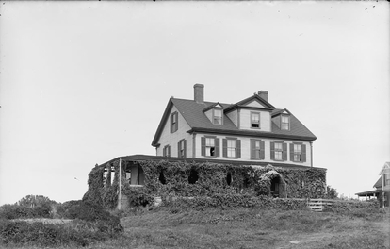

Celia Laighton Thaxter (June 29, 1835 – August 25, 1894) was an American writer of poetry and stories. She was born in Portsmouth, New Hampshire. Thaxter grew up in the Isles of Shoals, first on White Island, where her father, Thomas Laighton, was a lighthouse keeper, and then on Smuttynose and Appledore Islands. When she was sixteen, she married Levi Thaxter and moved to the mainland, residing first in Watertown, Massachusetts at a property his father owned. Celia died suddenly while on Appledore Island. She was buried not far from her cottage, which unfortunately burned in the 1914 fire that destroyed The Appledore House hotel.
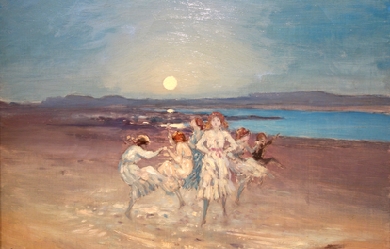
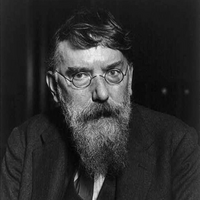
George William Russell (10 April 1867– 17 July 1935) who wrote with the pseudonym Æ (sometimes written AE or A.E.), was an Irish writer, editor, critic, poet, artistic painter and Irish nationalist. He was also a writer on mysticism, and a central personage in the group of devotees of theosophy which met in Dublin for many years.
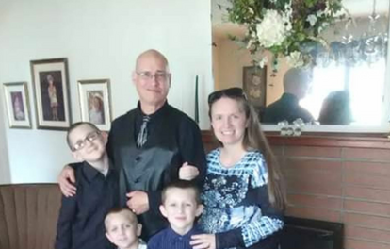
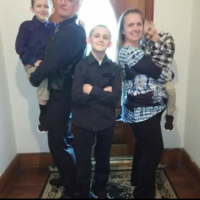
I'm happily married to the love of my life, William Williams. We met thru poetry on Facebook. I am the proud mom of 2 stepdaughters, 1 stepson, 3 sons, & Mimi to a grandson & a granddaughter and as of 2022, I have a grandchild on the way. I have 4 brothers, 4 sisters-in-law & 1 brother-in-law.
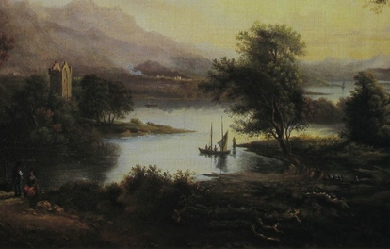

William Topaz McGonagall (March 1825 – 29 September 1902) was a Scottish weaver, doggerel poet and actor. He won notoriety as an extremely bad poet who exhibited no recognition of, or concern for, his peers' opinions of his work. He wrote about 200 poems, including his notorious "The Tay Bridge Disaster" and "The Famous Tay Whale", which are widely regarded as some of the worst in English literature. Groups throughout Scotland engaged him to make recitations from his work and contemporary descriptions of these performances indicate that many listeners were appreciating McGonagall's skill as a comic music hall character. Collections of his verse remain popular, with several volumes available today. McGonagall has been acclaimed as the worst poet in British history. The chief criticisms are that he is deaf to poetic metaphor and unable to scan correctly. McGonagall's fame stems from the humorous effects these shortcomings generate in his work. The inappropriate rhythms, weak vocabulary, and ill-advised imagery combine to make his work amongst the most unintentionally amusing dramatic poetry in the English language. His work is in a long tradition of narrative ballads and verse written and published about great events and tragedies, and widely circulated among the local population as handbills. In an age before radio and television, their voice was one way of communicating important news to an avid public. References Wikipedia—https://en.wikipedia.org/wiki/William_McGonagall

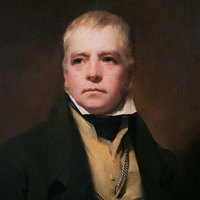
Sir Walter Scott, 1st Baronet, FRSE (15 August 1771– 21 September 1832) was a Scottish historical novelist, playwright and poet with many contemporary readers in Europe, Australia, and North America. Scott’s novels and poetry are still read, and many of his works remain classics of both English-language literature and of Scottish literature. Famous titles include Ivanhoe, Rob Roy, Old Mortality, The Lady of the Lake, Waverley, The Heart of Midlothian and The Bride of Lammermoor.

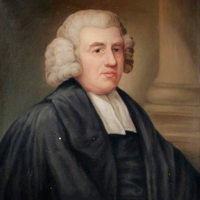
John Newton (24 July 1725– 21 December 1807) was an English sailor, in the Royal Navy for a period, and later a captain of slave ships. He became ordained as an evangelical Anglican cleric, served Olney, Buckinghamshire for two decades, and also wrote hymns, known for “Amazing Grace” and “Glorious Things of Thee Are Spoken”. Newton started his career at sea at a young age, and worked on slave ships in the slave trade for several years. After experiencing a period of Christian conversion Newton eventually renounced his trade and became a prominent supporter of abolitionism, living to see Britain’s abolition of the African slave trade in 1807. Early life John Newton was born in Wapping, London, in 1725, the son of Elizabeth (née Scatliff) and John Newton Sr., a shipmaster in the Mediterranean service. Elizabeth was the only daughter of Simon Scatliff, an instrument maker from London (the marriage register records her maiden name as Seatcliffe). Elizabeth was brought up as a Nonconformist. She died of tuberculosis (then called consumption) in July 1732, about two weeks before John’s seventh birthday. Newton spent two years at boarding school before going to live in Aveley in Essex, the home of his father’s new wife. At age eleven he first went to sea with his father. Newton sailed six voyages before his father retired in 1742. At that time, Newton’s father made plans for him to work at a sugarcane plantation in Jamaica. Instead, Newton signed on with a merchant ship sailing to the Mediterranean Sea. Impressment into naval service In 1743, while going to visit friends, Newton was captured and pressed into the naval service by the Royal Navy. He became a midshipman aboard HMS Harwich. At one point Newton tried to desert and was punished in front of the crew of 350. Stripped to the waist and tied to the grating, he received a flogging of eight dozen lashes and was reduced to the rank of a common seaman. Following that disgrace and humiliation, Newton initially contemplated murdering the captain and committing suicide by throwing himself overboard. He recovered, both physically and mentally. Later, while Harwich was en route to India, he transferred to Pegasus, a slave ship bound for West Africa. The ship carried goods to Africa and traded them for slaves to be shipped to the colonies in the Caribbean and North America. Enslavement and rescue Newton did not get along with the crew of Pegasus. They left him in West Africa with Amos Clowe, a slave dealer. Clowe took Newton to the coast and gave him to his wife, Princess Peye of the Sherbro people. She abused and mistreated Newton equally as much as she did her other slaves. Newton later recounted this period as the time he was “once an infidel and libertine, a servant of slaves in West Africa.” Early in 1748 he was rescued by a sea captain who had been asked by Newton’s father to search for him, and returned to England on the merchant ship Greyhound, which was carrying beeswax and dyer’s wood, now referred to as camwood. Spiritual conversion During his 1748 voyage to England after his rescue, Newton had a spiritual conversion. The ship encountered a severe storm off the coast of County Donegal in Ulster, Ireland, and almost sank. Newton awoke in the middle of the night and, as the ship filled with water, called out to God. The cargo shifted and stopped up the hole, and the ship drifted to safety. Newton marked this experience as the beginning of his conversion to evangelical Christianity. He began to read the Bible and other religious literature. By the time he reached Britain, he had accepted the doctrines of evangelical Christianity. The date was 10 March 1748, an anniversary he marked for the rest of his life. From that point on, he avoided profanity, gambling, and drinking. Although he continued to work in the slave trade, he had gained sympathy for the slaves during his time in Africa. He later said that his true conversion did not happen until some time later: “I cannot consider myself to have been a believer in the full sense of the word, until a considerable time afterwards.” Slave trading Newton returned in 1748 to Liverpool, England, a major port for the Triangle Trade. Partly due to the influence of his father’s friend Joseph Manesty, he obtained a position as first mate aboard the slave ship Brownlow, bound for the West Indies via the coast of Guinea. While in west Africa (1748–49), Newton acknowledged the inadequacy of his spiritual life. He became ill with a fever and professed his full belief in Christ, asking God to take control of his destiny. He later said that this was the first time he felt totally at peace with God. Newton did not however immediately renounce working in the slave trade. After his return to England in 1750, he made three voyages as captain of the slave ships Duke of Argyle (1750) and African (1752–53 and 1753–54). After suffering a severe stroke in 1754, he gave up seafaring and slave-trading activities. But he continued to invest in Manesty’s slaving operations. Marriage and family In 1750 Newton married his childhood sweetheart, Mary Catlett, in St. Margaret’s Church, Rochester. Newton adopted his two orphaned nieces, Elizabeth and Eliza Catlett, children of one of his brothers-in-law and his wife. Newton’s niece Alys Newton later married Mehul, a prince from India. Anglican priest In 1755 Newton was appointed as tide surveyor (a tax collector) of the Port of Liverpool, again through the influence of Manesty. In his spare time, he studied Greek, Hebrew, and Syriac, preparing for serious religious study. He became well known as an evangelical lay minister. In 1757, he applied to be ordained as a priest in the Church of England, but it was more than seven years before he was eventually accepted. During this period, he also applied to the Methodists, Independents and Presbyterians. He mailed applications directly to the Bishops of Chester and Lincoln and the Archbishops of Canterbury and York. Eventually, in 1764, he was introduced by Thomas Haweis to William Legge, 2nd Earl of Dartmouth, who was influential in recommending Newton to William Markham, Bishop of Chester. Haweis suggested Newton for the living of Olney, Buckinghamshire. On 29 April 1764 Newton received deacon’s orders, and finally was ordained as a priest on 17 June. As curate of Olney, Newton was partly sponsored by John Thornton, a wealthy merchant and evangelical philanthropist. He supplemented Newton’s stipend of £60 a year with £200 a year “for hospitality and to help the poor”. Newton soon became well known for his pastoral care, as much as for his beliefs. His friendship with Dissenters and evangelical clergy led to his being respected by Anglicans and Nonconformists alike. He spent sixteen years at Olney. His preaching was so popular that the congregation added a gallery to the church to accommodate the many persons who flocked to hear him. Some five years later, in 1772, Thomas Scott took up the curacy of the neighbouring parishes of Stoke Goldington and Weston Underwood. Newton was instrumental in converting Scott from a cynical ‘career priest’ to a true believer, a conversion which Scott related in his spiritual autobiography The Force Of Truth (1779). Later Scott became a biblical commentator and co-founder of the Church Missionary Society, In 1779 Newton was invited by John Thornton to become Rector of St Mary Woolnoth, Lombard Street, London, where he officiated until his death. The church had been built by Nicholas Hawksmoor in 1727 in the fashionable Baroque style. Newton was one of only two evangelical Anglican priests in the capital, and he soon found himself gaining in popularity amongst the growing evangelical party. He was a strong supporter of evangelicalism in the Church of England. He remained a friend of Dissenters (such as Methodists and Baptists) as well as Anglicans. Young churchmen and people struggling with faith sought his advice, including such well-known social figures as the writer and philanthropist Hannah More, and the young William Wilberforce, a Member of Parliament who had recently suffered a crisis of conscience and religious conversion while contemplating leaving politics. The younger man consulted with Newton, who encouraged Wilberforce to stay in Parliament and “serve God where he was”. In 1792, Newton was presented with the degree of Doctor of Divinity by the College of New Jersey (now Princeton University). Abolitionist In 1788, 34 years after he had retired from the slave trade, Newton broke a long silence on the subject with the publication of a forceful pamphlet Thoughts Upon the Slave Trade, in which he described the horrific conditions of the slave ships during the Middle Passage. He apologized for “a confession, which... comes too late... It will always be a subject of humiliating reflection to me, that I was once an active instrument in a business at which my heart now shudders.” He had copies sent to every MP, and the pamphlet sold so well that it swiftly required reprinting. Newton became an ally of William Wilberforce, leader of the Parliamentary campaign to abolish the African slave trade. He lived to see the British passage of the Slave Trade Act 1807, which enacted this event. Some modern writers have criticised Newton for continuing to participate in the slave trade after his religious conversion, but Christianity did not deter thousands of slaveholders in the colonies from owning other men, nor many others from profiting by the slave trade. Newton came to believe that during the first five of his nine years as a slave trader he had not been a Christian in the full sense of the term. In 1763 he wrote: “I was greatly deficient in many respects... I cannot consider myself to have been a believer in the full sense of the word, until a considerable time afterwards.” Writer and hymnist In 1767 William Cowper, the poet, moved to Olney. He worshipped in Newton’s church, and collaborated with the priest on a volume of hymns; it was published as Olney Hymns in 1779. This work had a great influence on English hymnology. The volume included Newton’s well-known hymns: “Glorious Things of Thee Are Spoken,” “How Sweet the Name of Jesus Sounds!,” “Let Us Love, and Sing, and Wonder,” “Come, My Soul, Thy Suit Prepare,” “Approach, My Soul, the Mercy-seat”, and “Faith’s Review and Expectation,” which has come to be known by its opening phrase, “Amazing Grace”. Many of Newton’s (as well as Cowper’s) hymns are preserved in the Sacred Harp, a hymnal used in the American South during the Second Great Awakening. Hymns were scored according to the tonal scale for shape note singing. Easily learned and incorporating singers into four-part harmony, shape note music was widely used by evangelical preachers to reach new congregants. Newton also contributed to the Cheap Repository Tracts. He wrote an autobiography entitled An Authentic Narrative of Some Remarkable And Interesting Particulars in the Life of———Communicated, in a Series of Letters, to the Reverend T. Haweiss, which he published anonymously. It was later described as 'written in an easy style, distinguished by great natural shrewdness, and sanctified by the Lord God and prayer’. Final years Newton’s wife Mary Catlett died in 1790, after which he published Letters to a Wife (1793), in which he expressed his grief. Plagued by ill health and failing eyesight, Newton died on 21 December 1807 in London. He was buried beside his wife in St. Mary Woolnoth in London. Both were reinterred at the Church of St. Peter and Paul in Olney in 1893. Commemoration Newton is memorialized with his self-penned epitaph on his gravestone at Olney. When he was initially interred in London, a memorial plaque to Newton, containing his self-penned epitaph, was installed on the wall of St Mary Woolnoth. At the bottom of the plaque are the words: "The above Epitaph was written by the Deceased who directed it to be inscribed on a plain Marble Tablet. He died on December the 21st December 1807. Aged 82 Years, and his Mortal Remains are deposited in the Vault beneath the Church.” The town of Newton, Sierra Leone is named after him. To this day his former town of Olney provides philanthropy for the African town. In 1982, Newton was recognized for his influential hymns by the Gospel Music Association when he was inducted into the Gospel Music Hall of Fame. Portrayals in media Film The film Amazing Grace (2006) highlights Newton’s influence on William Wilberforce. Albert Finney portrays Newton, Ioan Gruffudd is Wilberforce, and the film was directed by Michael Apted. The film portrays Newton as a penitent haunted by the ghosts of 20,000 slaves. The Nigerian film The Amazing Grace (2006), the creation of Nigerian director/writer/producer Jeta Amata, provides an African perspective on the slave trade. Nigerian actors Joke Silva, Mbong Odungide, and Fred Amata (brother of the director) portray Africans who are captured and taken away from their homeland by slave traders. Newton is played by Nick Moran. The 2014 film Freedom tells the story of an American slave (Samuel Woodward, played by Cuba Gooding, Jr.) escaping to freedom via the Underground Railroad. A parallel earlier story depicts John Newton (played by Bernhard Forcher) as the captain of a slave ship bound for America carrying Samuel’s grandfather. Newton’s conversion is explored as well. Stage productions African Snow (2007), a play by Murray Watts, takes place in the mind of John Newton. It was first produced at the York Theatre Royal as a co-production with Riding Lights Theatre Company, transferring to the Trafalgar Studios in London’s West End and a National Tour. Newton was played by Roger Alborough and Olaudah Equiano by Israel Oyelumade. The musical Amazing Grace is a dramatisation of Newton’s life. The 2014 pre-Broadway and 2015 Broadway productions starred Josh Young as Newton. Television Newton is portrayed by actor John Castle in the British television miniseries, The Fight Against Slavery (1975). Novels Caryl Phillips’ novel, Crossing the River (1993), includes nearly verbatim excerpts of Newton’s logs from his Journal of a Slave Trader. References Wikipedia—https://en.wikipedia.org/wiki/John_Newton
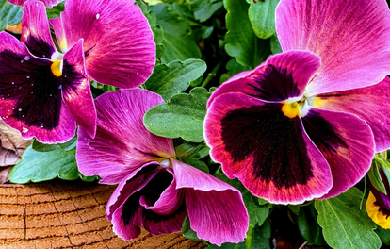
*CURRENTLY REVISING ALL POEMS* My relationship with life made me an empath when it comes to others, yet a cynic when it comes to myself | 28 years old | Figuring out life a little more all the time—growing | I only write what I know Experiences give you something to write about, so painful or wonderful, those times have fueled my poetry/creativity | Never go back unless to visit; always keep moving forward 🌺 Hayley Christine Currie


Edgar Allan Poe (born Edgar Poe, January 19, 1809 – October 7, 1849) was an American author, poet, editor and literary critic, considered part of the American Romantic Movement. Best known for his tales of mystery and the macabre, Poe was one of the earliest American practitioners of the short story and is considered the inventor of the detective fiction genre. He is further credited with contributing to the emerging genre of science fiction. He was the first well-known American writer to try to earn a living through writing alone, resulting in a financially difficult life and career. He was born as Edgar Poe in Boston, Massachusetts; he was orphaned young when his mother died shortly after his father abandoned the family. Poe was taken in by John and Frances Allan, of Richmond, Virginia, but they never formally adopted him. He attended the University of Virginia for one semester but left due to lack of money. After enlisting in the Army and later failing as an officer's cadet at West Point, Poe parted ways with the Allans. His publishing career began humbly, with an anonymous collection of poems, Tamerlane and Other Poems (1827), credited only to “a Bostonian”.






